Francesca and Henk-Jan's Backpacking Trip!
Saturday, August 21, 2010
Castles And Demons
The first place we headed to on August 20th was Samding Monastery, part of the Gelukpa Sect. Samding was the seat of Dorje Pakmo (The Diamond Sow) aka Sera Kandro, the wrathful deity Demchok’s consort. She is considered the highest female incarnation in Tibet, and furthermore, is the third-highest ranking person in the ‘lamaist hierarchy’ after the Dalai Lama (number one) and the Panchen Lamas (number two.) The Diamond Sow’s incarnation unfortunately works in Lhasa for the government (hmm…) so we didn’t have a chance of seeing her while we were there. This did bring up a few questions for Ray from us – such as, was it fine for a female teacher to be the head of a monastery? What about a male head of a nunnery? Ray answered in the affirmative to both, which was a bit surprising, considering both the celibacy vows taken by each of these parties and their wish to not have members of the opposite gender stay overnight in schools of religious worship. (But maybe the situation is different for the Dalai Lama vs. monks/nuns.)
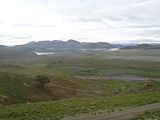
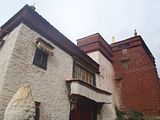
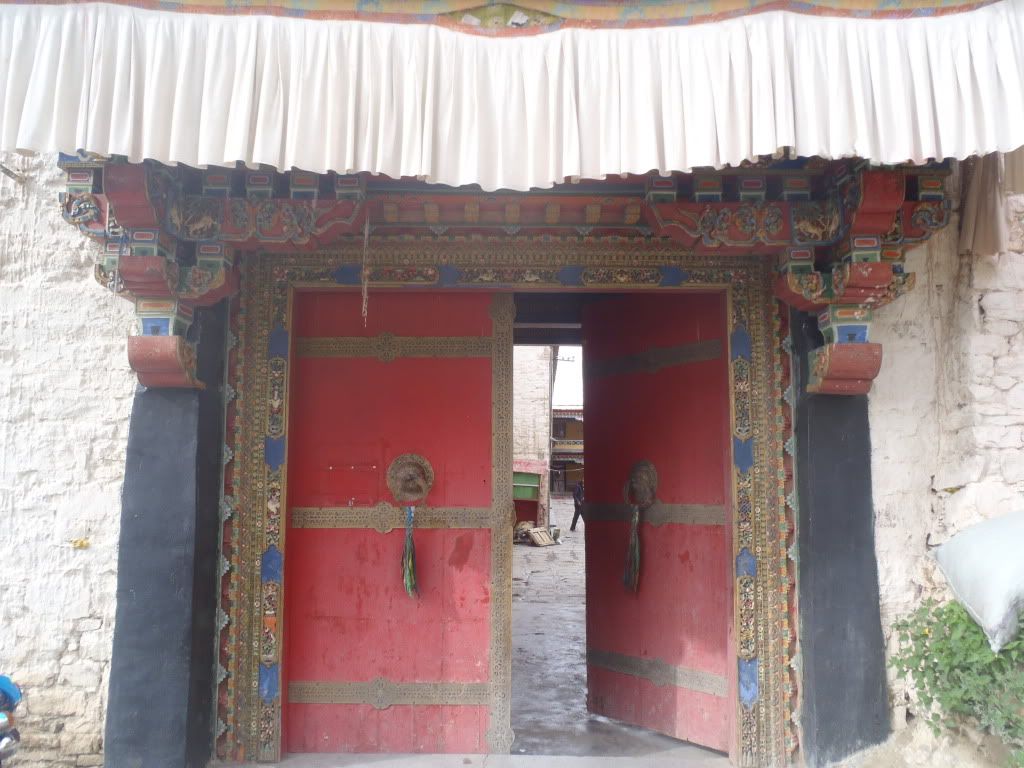
A little more about the monastery and its head nun/incarnation from its Wiki:
“Another hall in the monastery is the dus-k'aṅ, the walls of which are frescoes illustrative of the career of the original Dorje P'ag-mo. There also have been put up inscriptions recording how the goddess miraculously defended Samding, when, in the year 1716, it was beset by a Mongol warrior, one Yung Gar…The abbess became famous when she turned herself and her nuns into sows to prevent a Mongol raid on the nunnery in 1716 (McGovern gives 1717 for this event). It was destroyed after 1959 but is in the process of being restored.”

Another interesting fact we learned was the origin of the (made most famous, unfortunately, by the Nazis) swastika symbol. Both Tibetan Buddhism and the earlier animist Tibetan religion of Bon use the symbol known as a "yung drung," as a graphical representation of eternity. For the Bon however, their image is ‘flipped’ so it points in the other direction. This is similar to their tradition of circumambulating counter-clockwise, as opposed to the Buddhist tradition of circling a sacred representation clockwise. Actually this symbol has long been used by both Eastern and Western cultures, and especially different religions. I read that the symbol can easily become popular in “basket-weaving cultures” since it is a shape formed by the traditional method of interlacing leaves/binds for baskets.

As we walked up one of the sets of stairs in the compound for an additional floor to explore, we spotted a cool mural on the side of the wall. It had yak-hair tents, nomads, animals in the fields, and the entire monastery painted for everyone to see. We continued climbing until we came out onto the roof of the building. The view was absolutely amazing! There were mountains in the background, rivers sitting before them, and everything surrounded by green (and some brown) flat fields in every direction. One of the standout rooms I remember from this place is the newer section with very recent (just 6 years ago) images of deities and their various avatars. The room had to be unlocked just for us, as we were the only people there at this monastery so early in the morning.
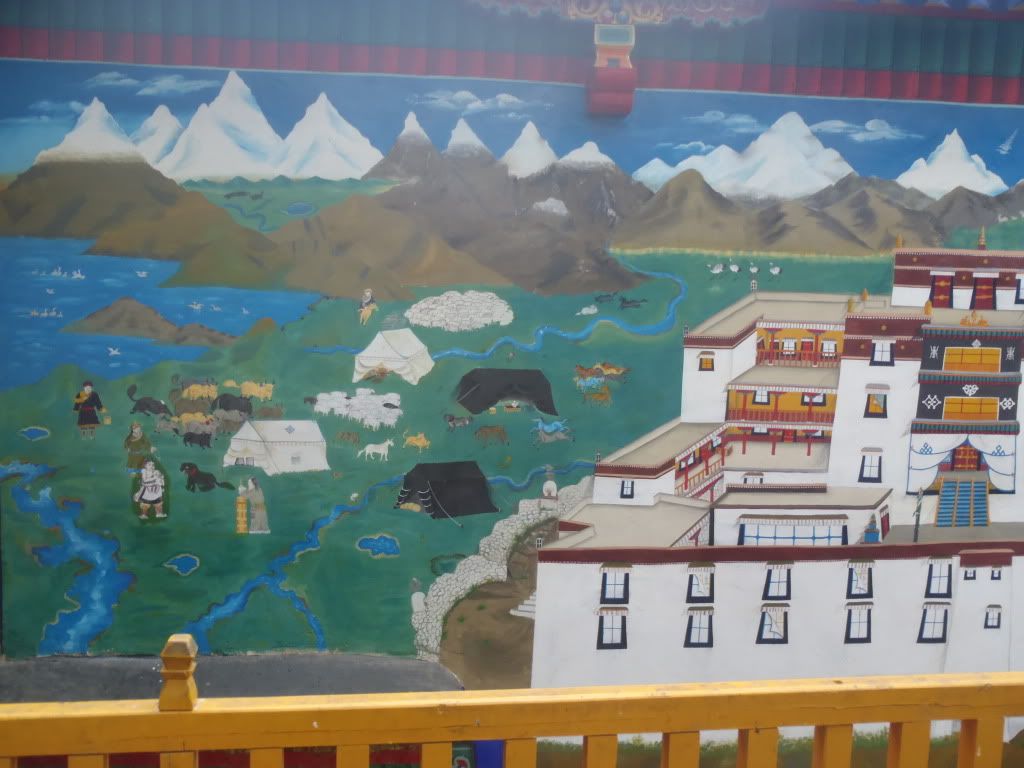
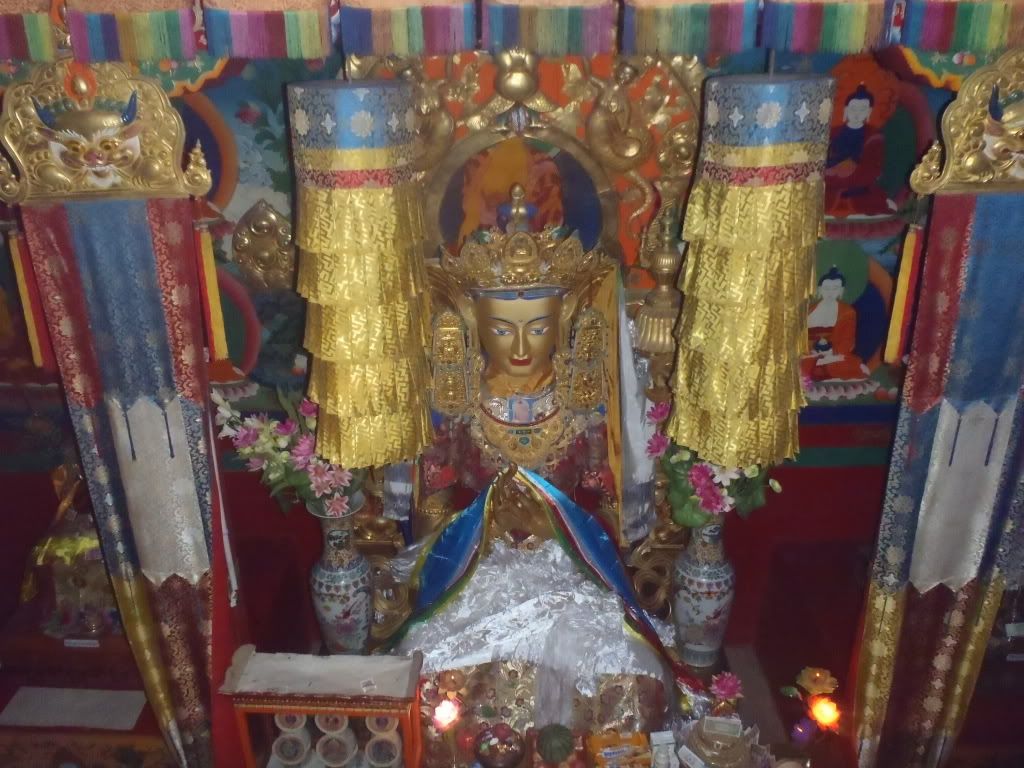
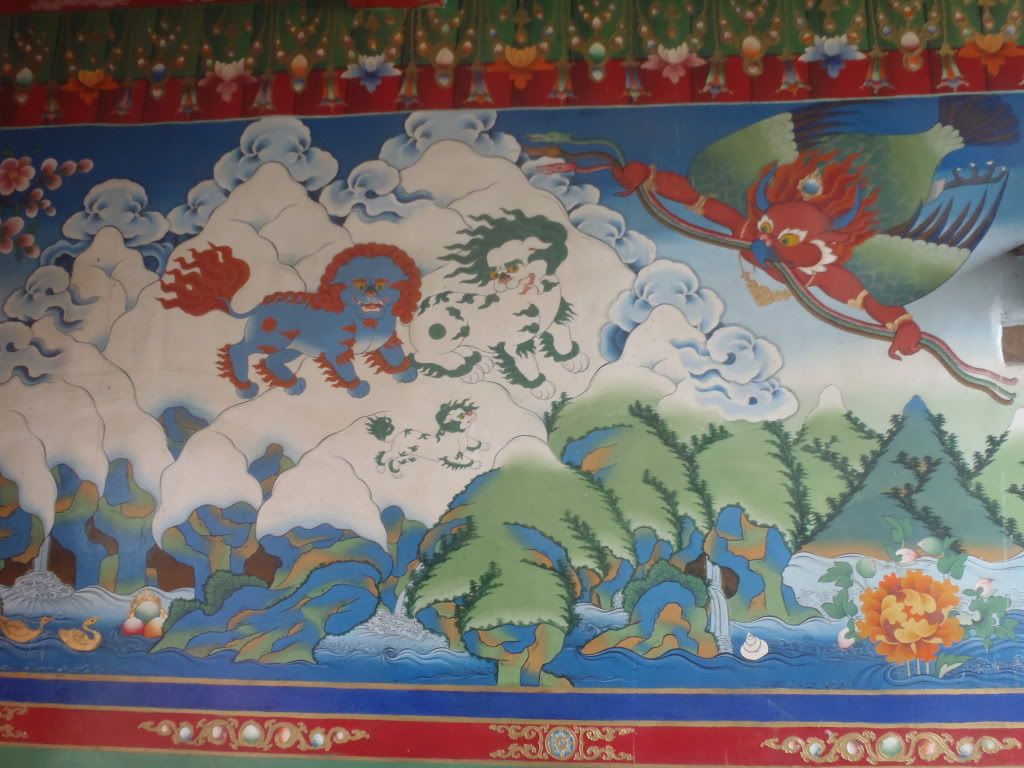

Ray had a special little ‘treat’ for us as we drove through more breathtaking Tibetan scenery. A glacier was coming up! From all the sources I could find, Kharola Glacier is 5560 meters high and lies on the border between Nagartse and Gyantse counties. It was so strange to have such a large glacier just –boom – sitting there around the corner! At the stop point Henk and Sam hopped out of the car to get some glacier pictures and before long we were back on the road.
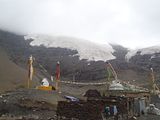
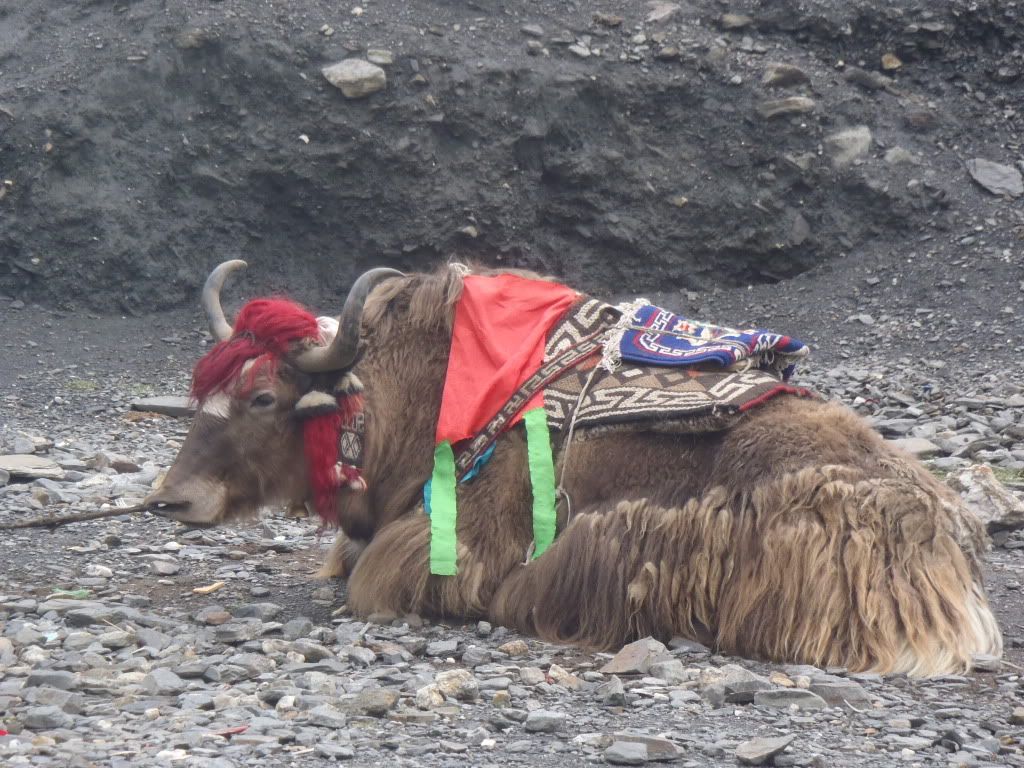
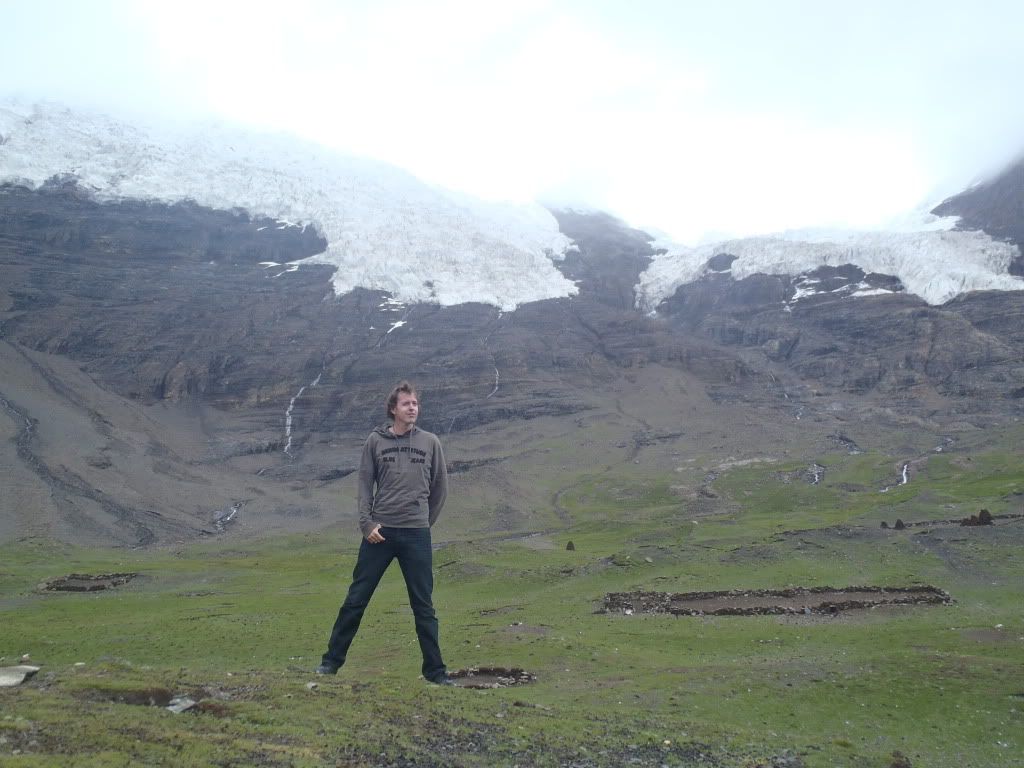
On the way to the next town we passed an absolutely beautiful turquoise lake called Yamdrok, the largest in Southern Tibet. This lake is unfortunately being drained by the Chinese government for water power – which is mostly directed towards the ‘mainland.’ For the Tibetans, this lake is absolutely sacred and should not be touched since it holds serious religious significance. One of the panchen lamas protested the building of a power station on such sacred grounds… of course this holds no meaning for the Han Chinese and they continue to drain the lake, which will eventually change its majestic color. (Furthermore, for their ‘credit’ the Chinese claim they will “top up” the lake – but have 1)yet to act on this claim – and 2) “topping up” the lake won’t stop the beautiful turquoise color from disappearing as a result of the initial draining since the consistency of the lake will be altered.”) After peering at Yamdrok we all headed to the town of Gyantse, where the Pelkor Chode Monastery which also contained the famous Kumbum “Place of 100 Thousand Images” Stupa is located. In the 14th-15th centuries Gyantse was founded as a city under feudalism by religious sects/monastic schools. This town is also famous for being the location where the British scouted and invaded Tibet, taking over a local fort.
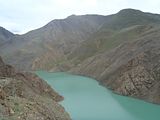
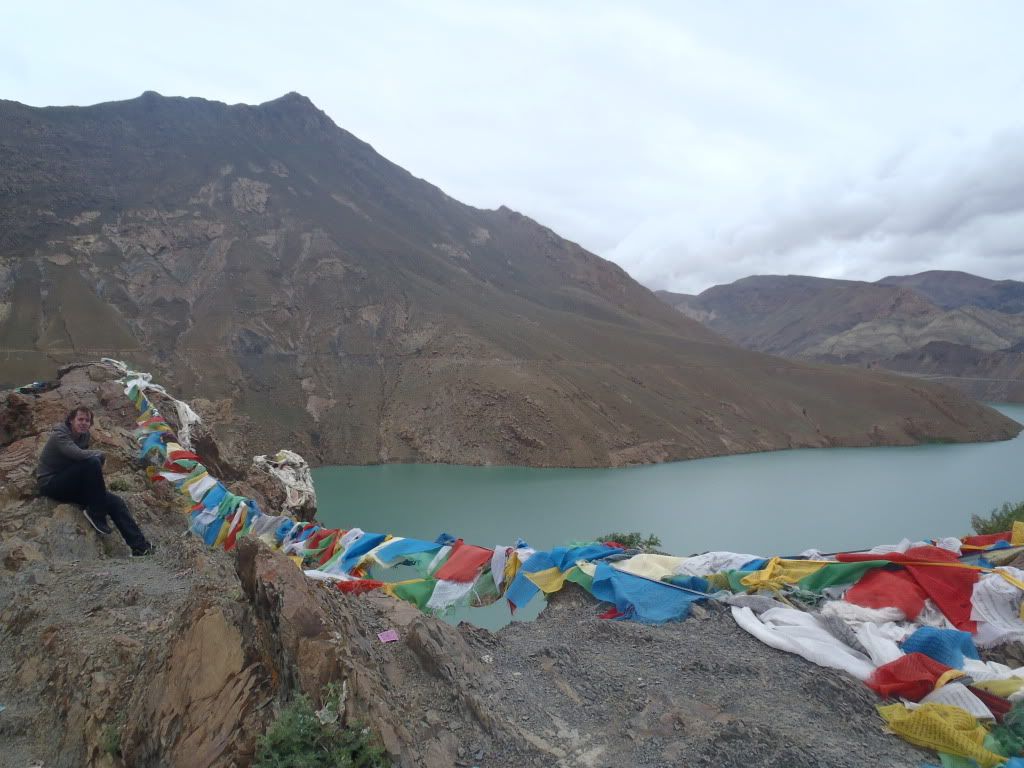
We bought our tickets for the Monastery and headed inside. The first thing we noticed was the huge stupa on the side, but we would go to that later. This Monastery was built by the Sakya sect, specifically built in the early 1400’s by Rabten Kunzang Phak – the second Prince of Gyantse. Yet again we passed the images of 4 Guardian Kings to enter into a large hall with murals and the most impressive, a 26 foot high (8 meters) copper image of the Buddha. Unfortunately one of the top floors was randomly closed (they do that quite often) so we weren’t able to view it, but there was something much more impressive waiting for us around the corner! Kumbum!

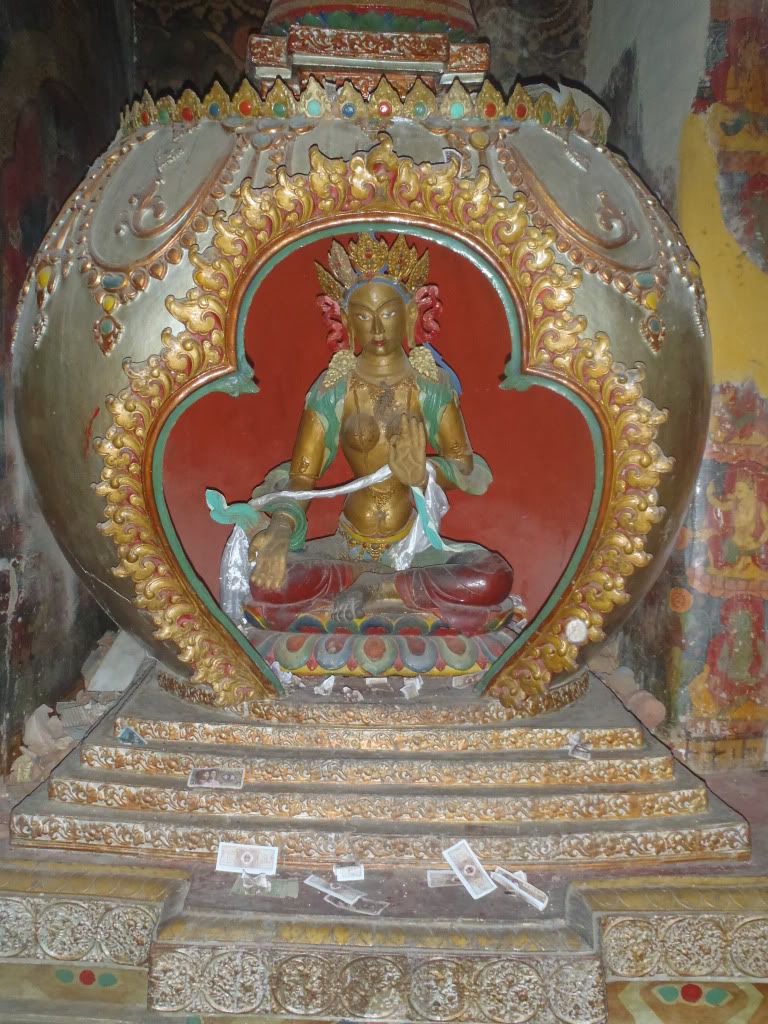
The Kumbum stupa is basically a series of multiple ‘3D mandalas’ which are meant to portray the Buddhist idea of the universe. There were 9 floors in total, each of the floors holding different ‘type’ of deities’ chapels. We circled around the groups of rooms, climbing the stairs to the next set once we were finished with the first. Man, was there a LOT of images! You almost got dizzy ducking in and out of the little rooms to look at one, and the next, and the next… Ray took us into each one and gave us a ‘one-liner’ about them, but there are far too many to show them all here. We’ll just post a couple pictures of the most interesting ones. Anyways, they all started to blend together at one point, which is when we decided to call it quits…
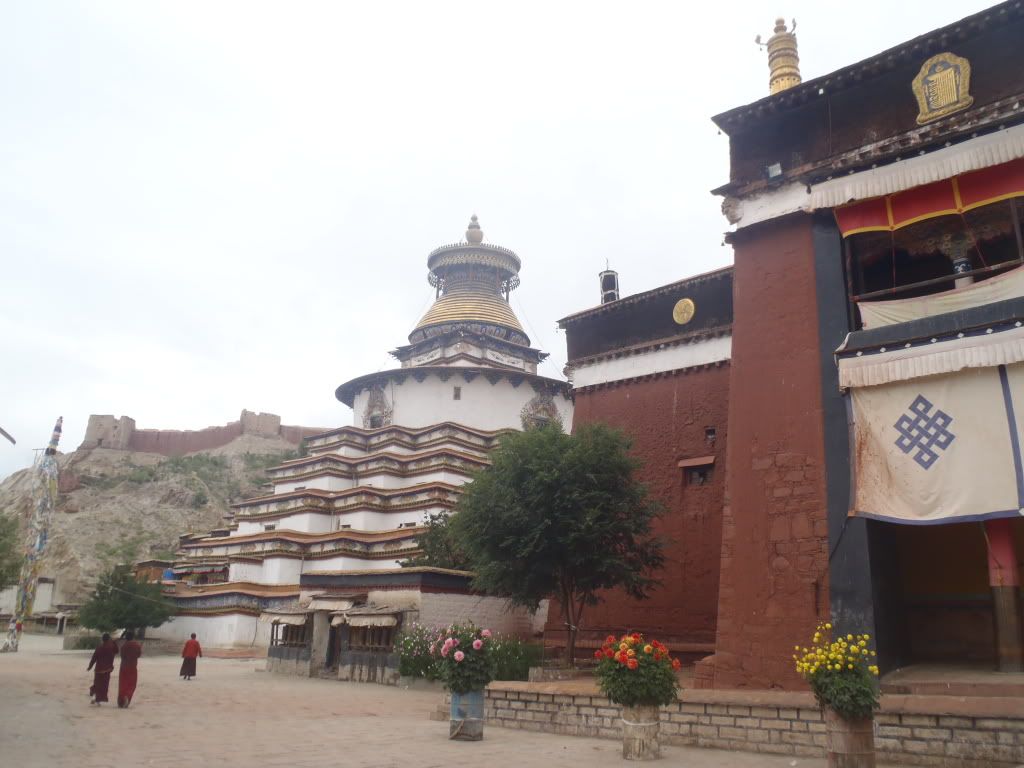
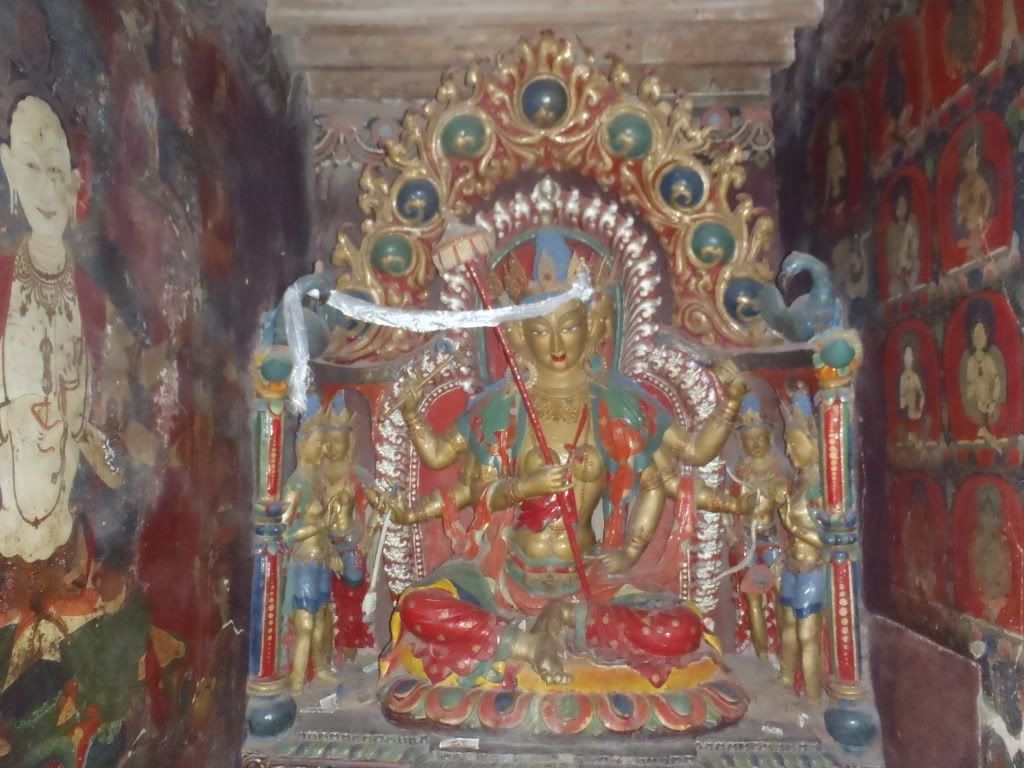
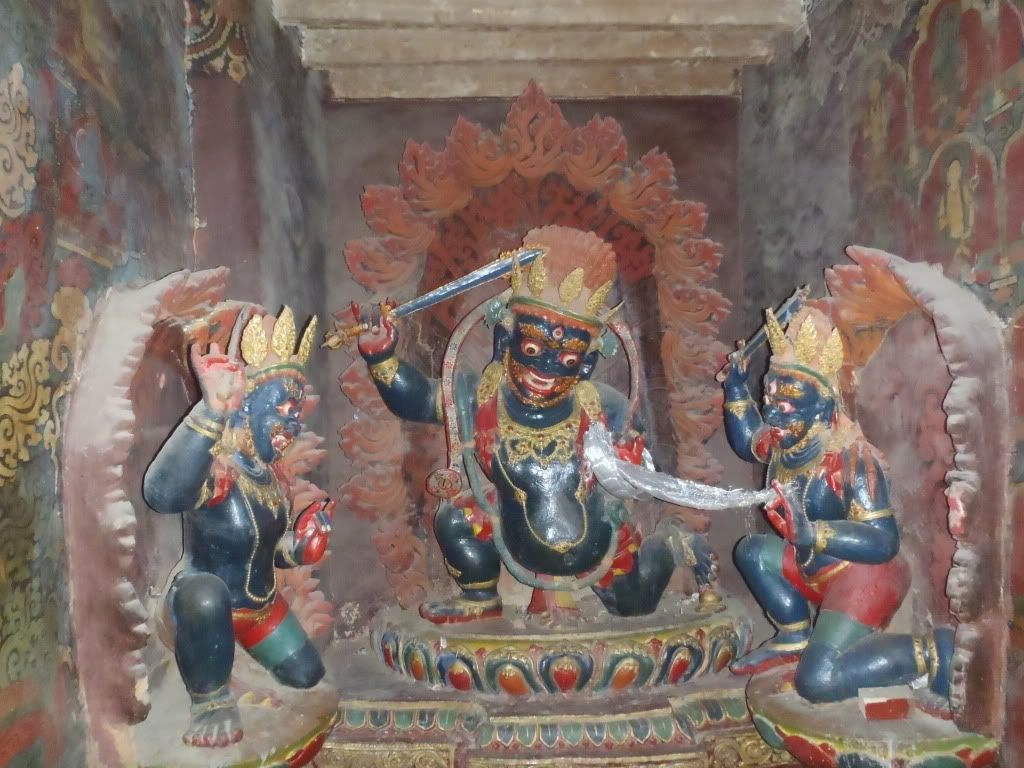
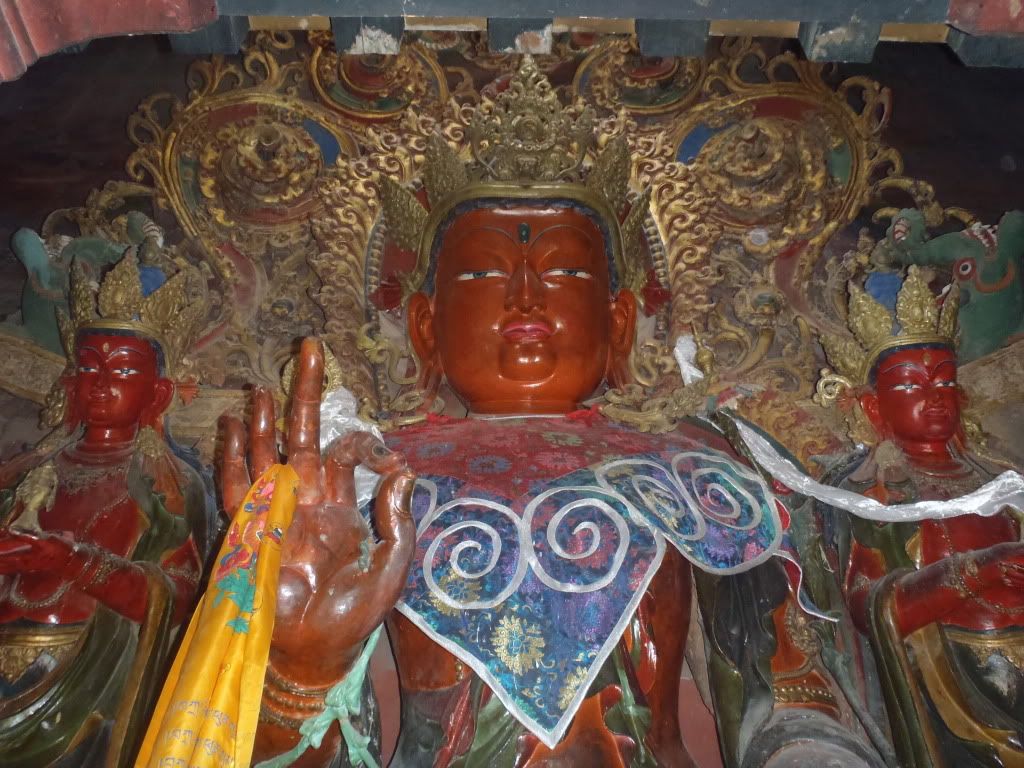
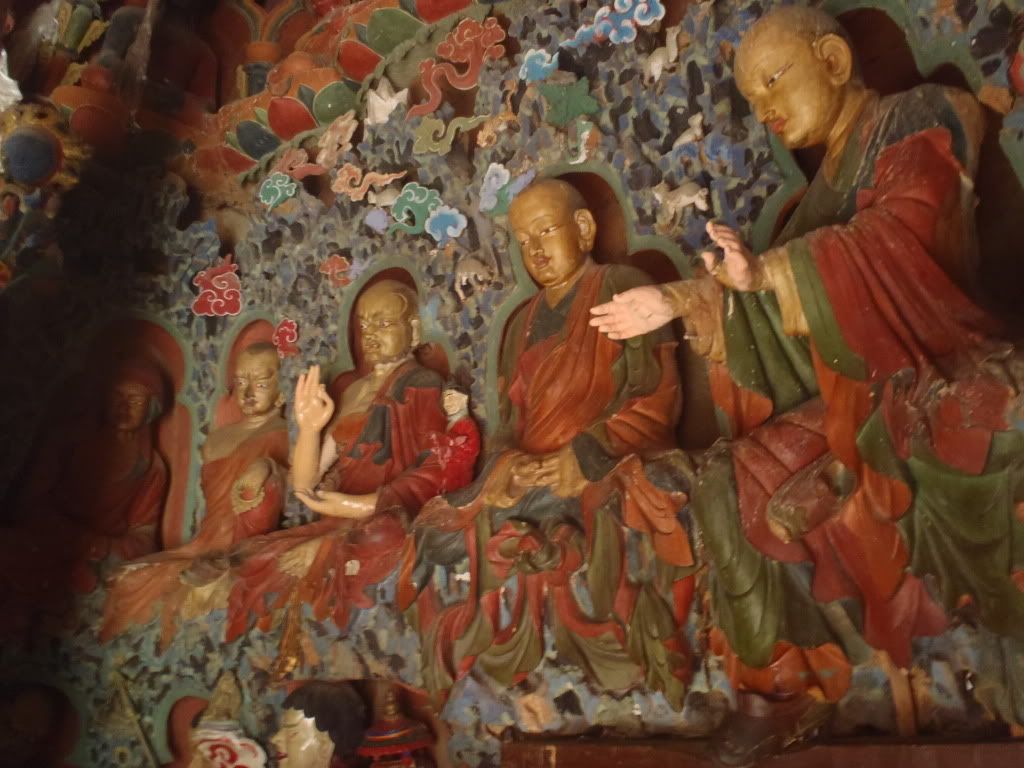
After Kumbum we all realized we were quite famished (and tired) so we headed for lunch at YAK Restaurant. There was a large Italian tour group already seated, so we knew our food wouldn’t come right away. I consumed 2 delicious cheese and bacon sandwiches (tastes delicious when you’ve gone weeks without real cheese!) and Henk had Yak Bourguignon which he said was “pretty good.” Sam’s chicken curry took a long time to arrive, and by the time ./;iwe all had finished we had to make a decision – go to the fort or not? No one was too excited about a steep, uphill climb for 30+ minutes but I really wanted to see something different than the typical ‘temple/monastery/etc.’ we had been taking in for the last days. My choice to go up left Henk and Sam with the decision to wait at the bottom or come up with us, and rather than stand around they chose the latter and we all ended up making the climb. And WOW no one was kidding when they said ‘steep!’ It was really a workout, but at least that meant I could justify my two sandwiches, right? Henk and Ray decided to race each other to the top, while Sam and I huffed and puffed our way after them arriving a bit later at the fort.
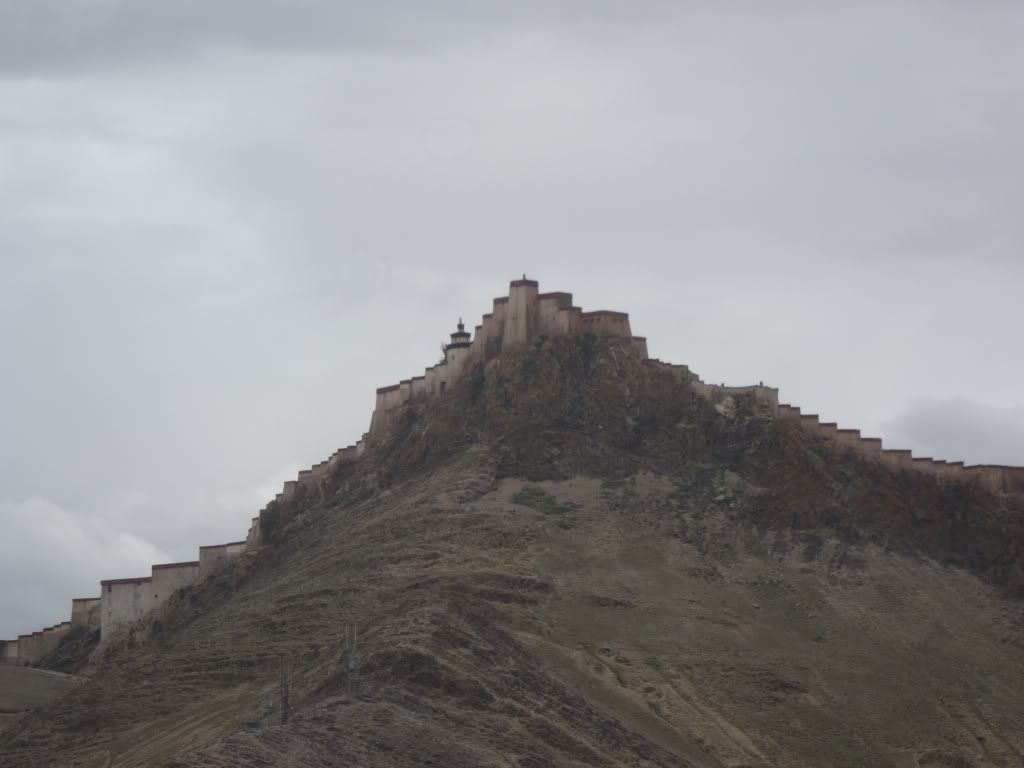
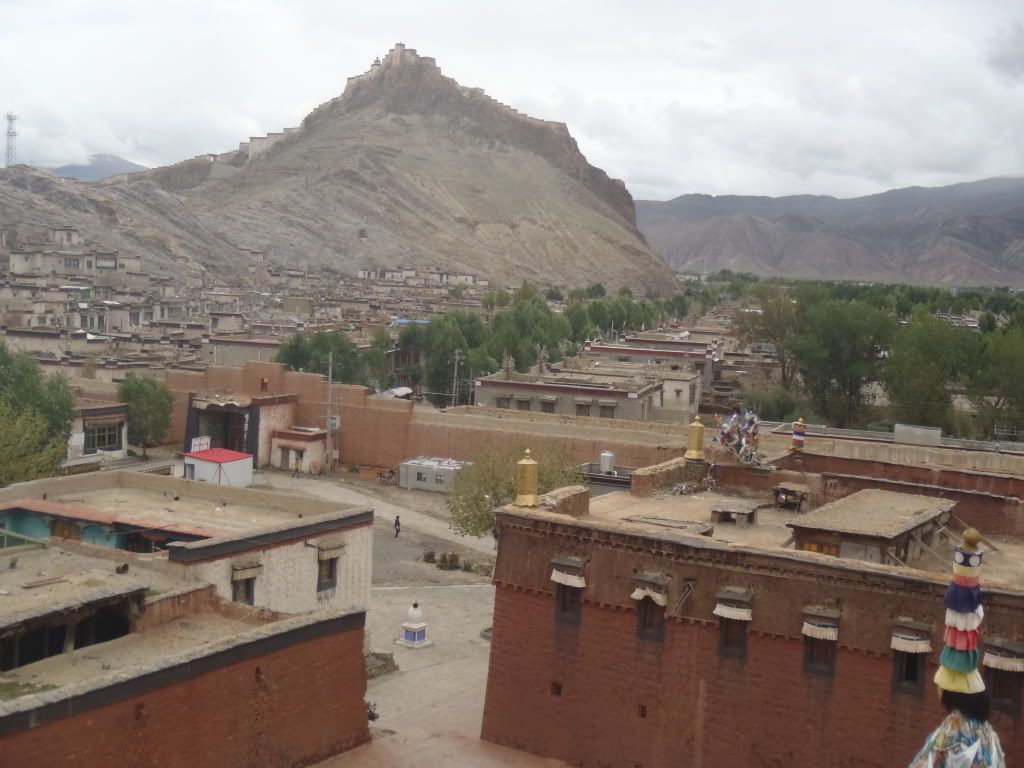
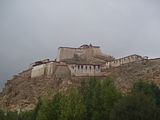
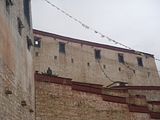
Once we bought our tickets we headed in to see a very impressive fort – adorned by some extremely pathetic displays. The first was the ‘Tax Hall’ where there were a bunch of peasant workers on display in front of tax collectors, showing their goods of production to them. There were also some old weapons lying around here. There was also a ‘Government Meeting Room’ of sorts, showing government officials discussing together local issues, including judging criminal offenders. There was a Buddhist monk present at these meetings, but it was just ‘for show’ and he didn’t really get involved, Ray explained. The four of us then headed outside to peer into a dungeon, and sentencing room for ‘post-judgment’ prisoners. The displays in the judgment area really gave us a good idea what happened to the guilty & unfortunate!
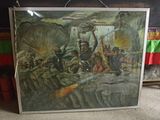
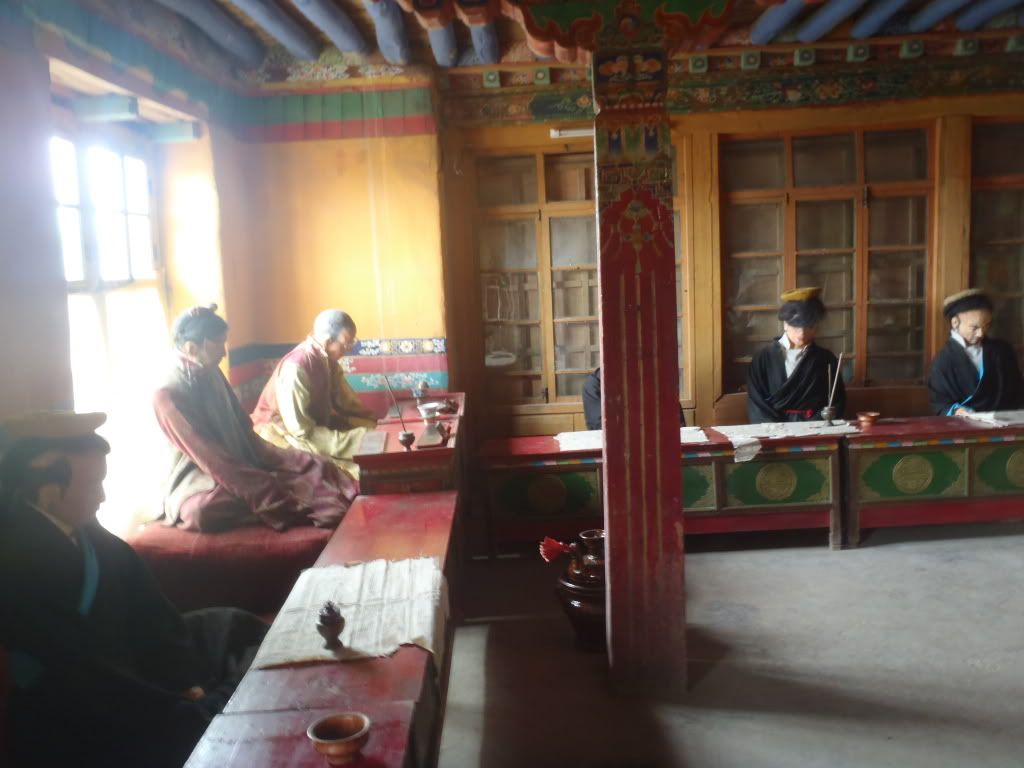
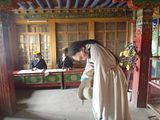
Here is a little background on the fort and its capture by the British from the Wiki:
“In 1904, the town and monastery were attacked by British soldiers under the leadership of Francis Younghusband (commanding 1000 troops, 10,000 servants, and 4,000 yaks) and although most of the damage was later restored, bullet holes from this attack remain in the monastery to this day... An assault was therefore made on the Gyantse fortress on 5 July and, the following day, after a spirited defense by the Tibetans which lasted until sometime after 2 pm, a heavy artillery bombardment blew a hole in the wall followed by a direct hit on the powder magazine, causing a large explosion after which some Gurkha and British troops manage to climb the rock face, scramble inside, and take the fort in spite of a heavy hail of boulders and stones thrown down upon them by the few defenders left on what remained of the walls... Following the capture of Gyantse fort, the agreement signed by the Tibetan Regent, resulted in establishment of British Trade Missions at Gyantse and Mt. Kailash in Tibet. In 1906, the British signed an agreement with the Chinese authorities, which established their influence over Tibet and thus "effectively ending both British and Russian influence".”
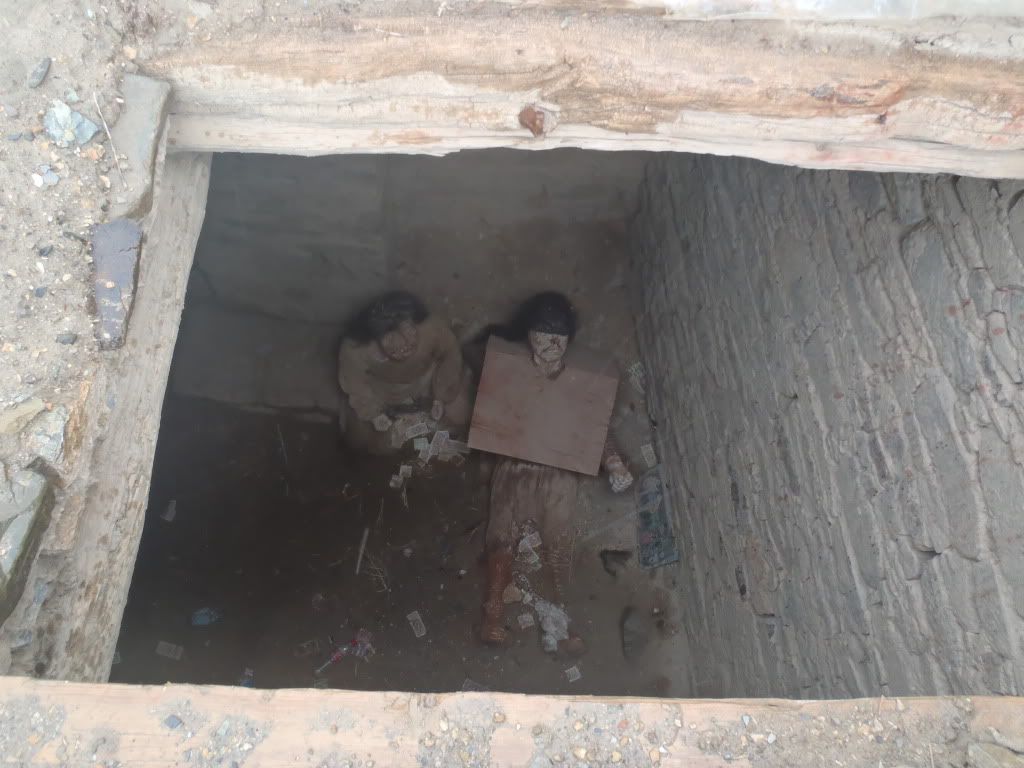
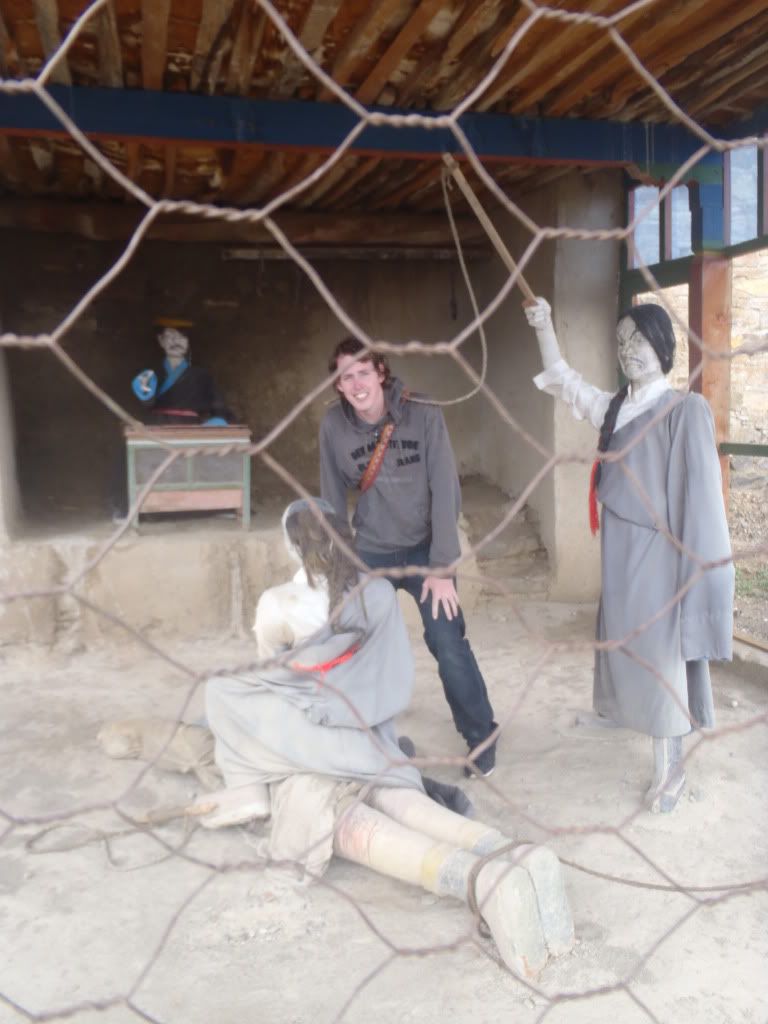
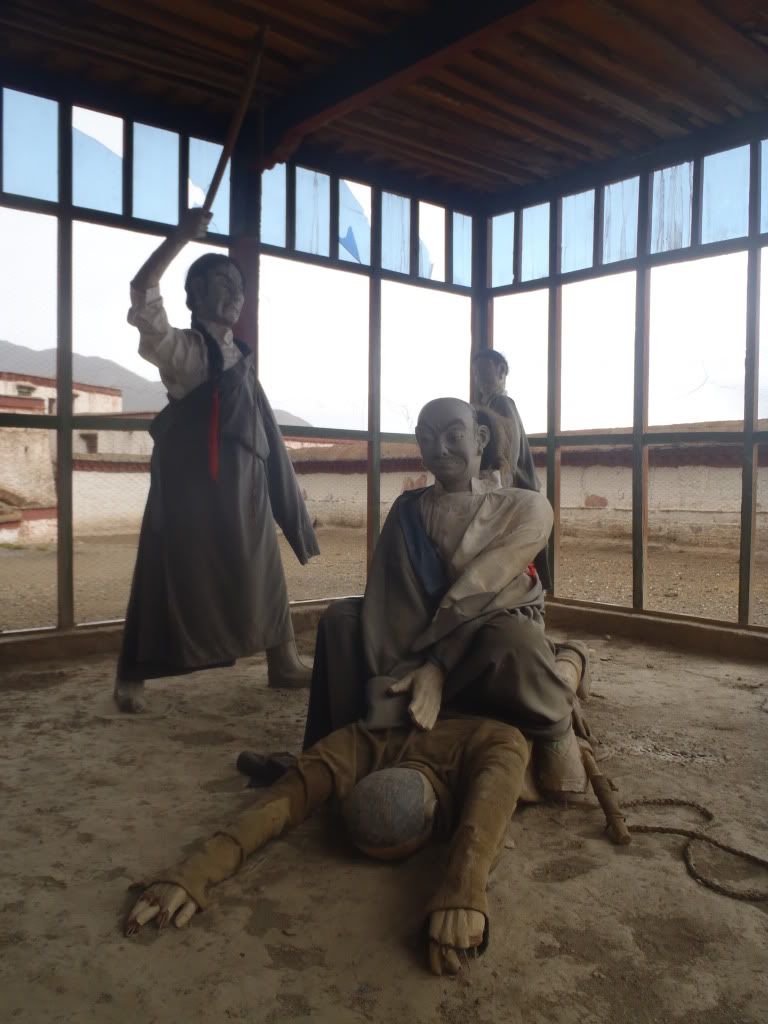
Unfortunately, despite all our climbing we actually were NOT at the top yet. There was another set of extremely steep and high stairs to tackle. While Henk and Sam this time decided to back out, Ray and I made our way slowly to the top for some absolutely incredible views of the city below. Furthermore, there were tons of twisting hallways to explore up there! Ray and I started wandering around before we moved to head down one of the darker halls. Suddenly, Ray started freaking out as I walked in – he claimed he had seen a mara for the first time in his life! Was this dzong haunted? I rolled my eyes, sure that he was joking with me. Hesitantly, I started again into the dark hall when I heard a sharp, loud noise that sounded like claws or screeching from somewhere in front of me. When this happened, I freaked out as well and Ray and I went running away from the hall and around to the side of the fort as fast as we could. Not wanting to temp any potential ghosts further, we made our way back down the stairs to relay to Sam and Henk our experience and possible evidence of haunting!

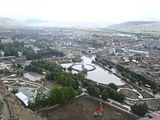
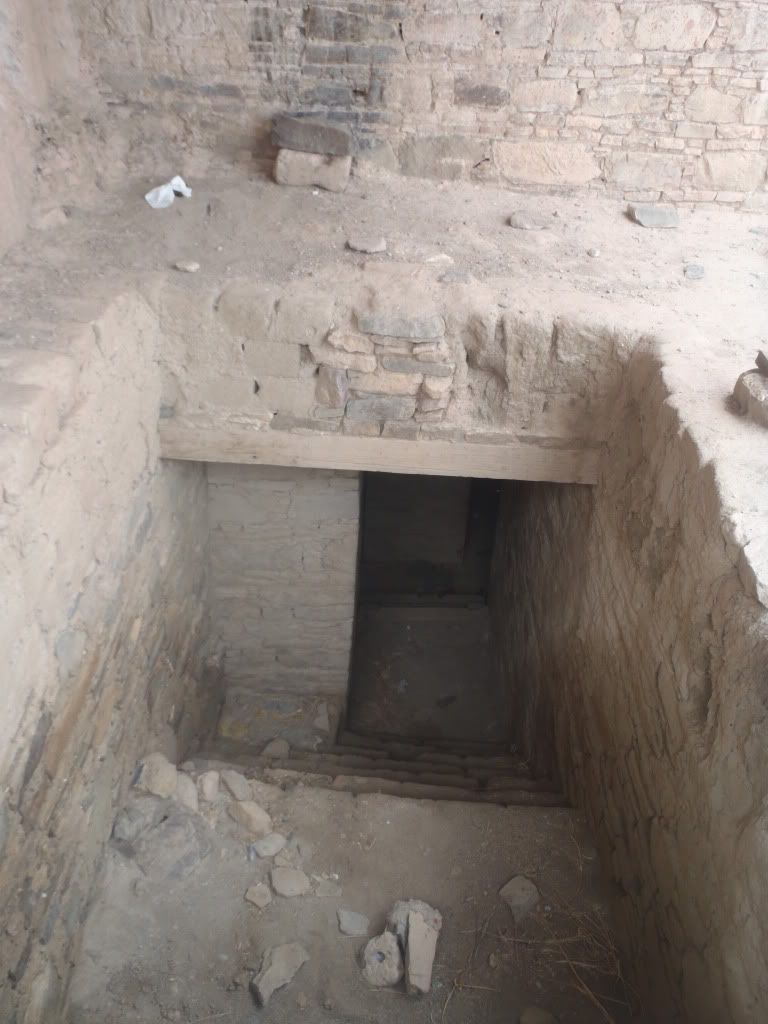
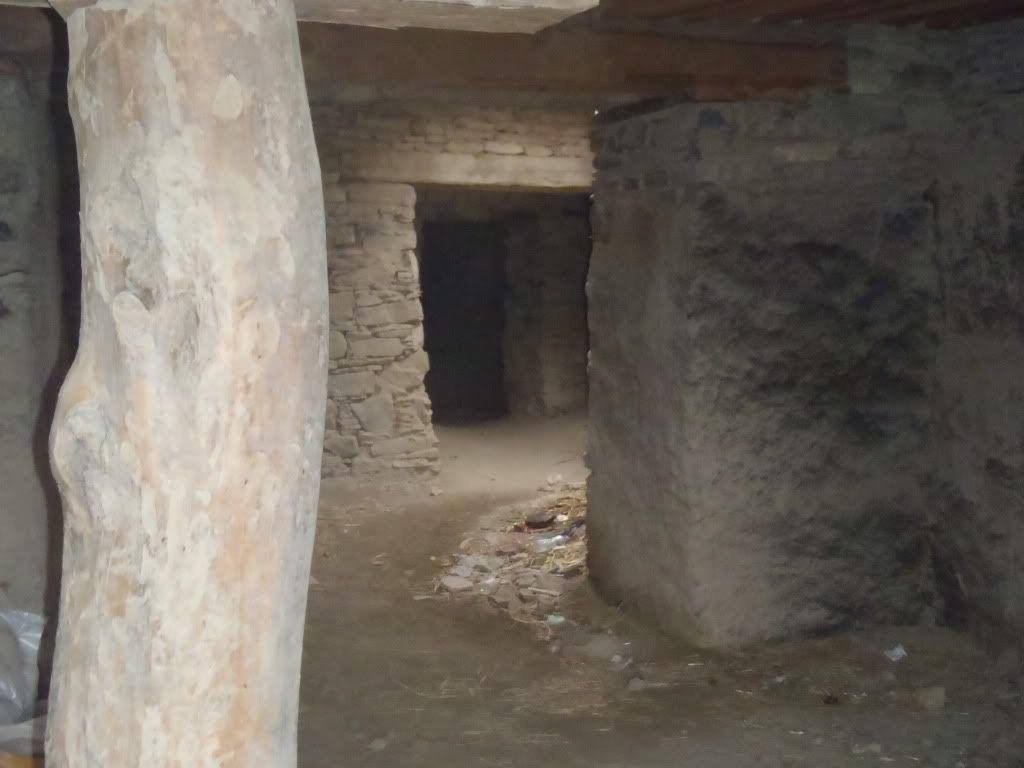
Finally done with the dzong, we piled back in the car and began yet again more driving! We did have a few more stops to make however… the first was just before 5:00 PM at the home of some local Tibetans. I had asked our agency to try and arrange a meeting for us with some of the locals, although we knew this could be an elaborate staging of the ‘How China is Good for Tibet’ game by local government officials. Turns out that our random nomad experience was indeed far more REAL than the local family. We walked into the local family’s colorfully painted house (which was quite large for Tibetan standards) and were immediately sat down on a couch with the hanging face of Mao Zedong directly in front of us. It was uncomfortable making conversation despite the fact that there was an English-speaking son (a college student who studies in China) in the family who was able to communicate with us. Ray later explained to us that Tibetans *never* ‘meet’ strangers and just start asking them questions about themselves, but that the people understood that Westerners did this because they were curious. Nonetheless it was obviously not comfortable for them and thus not for us.
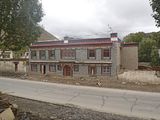
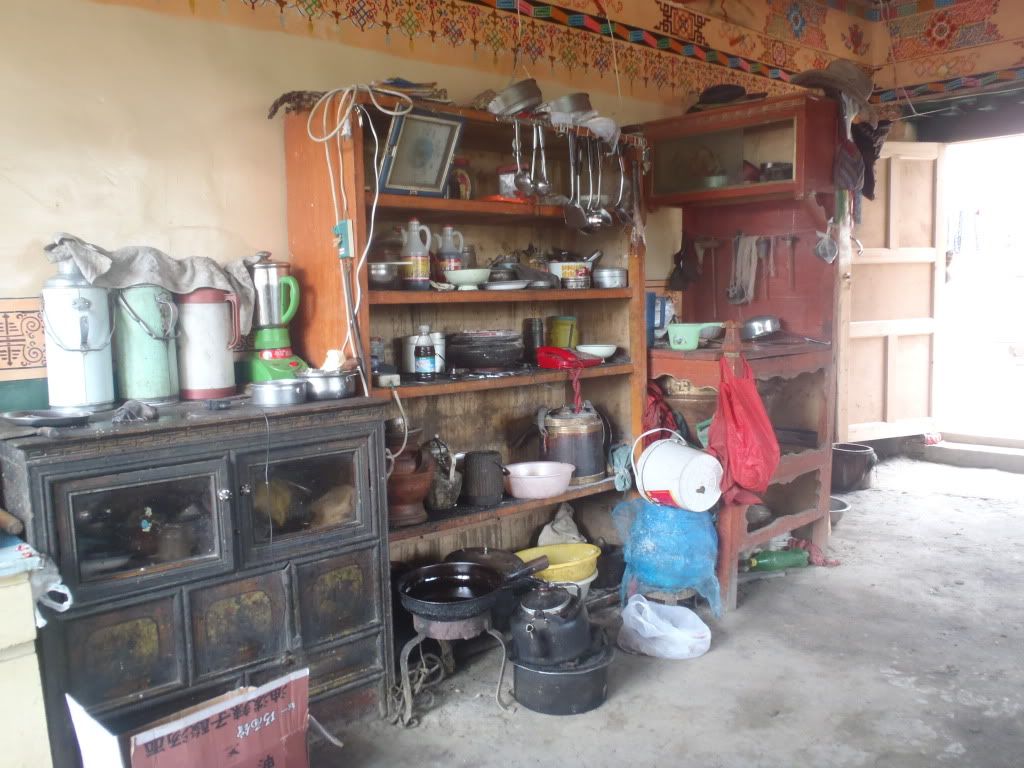
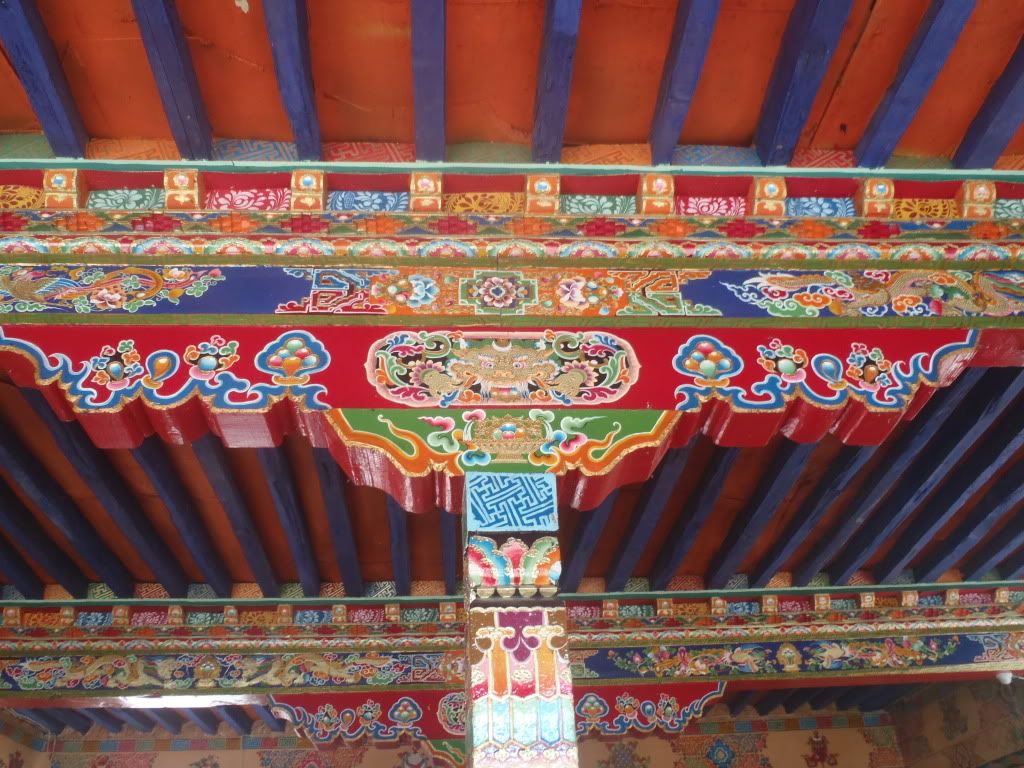
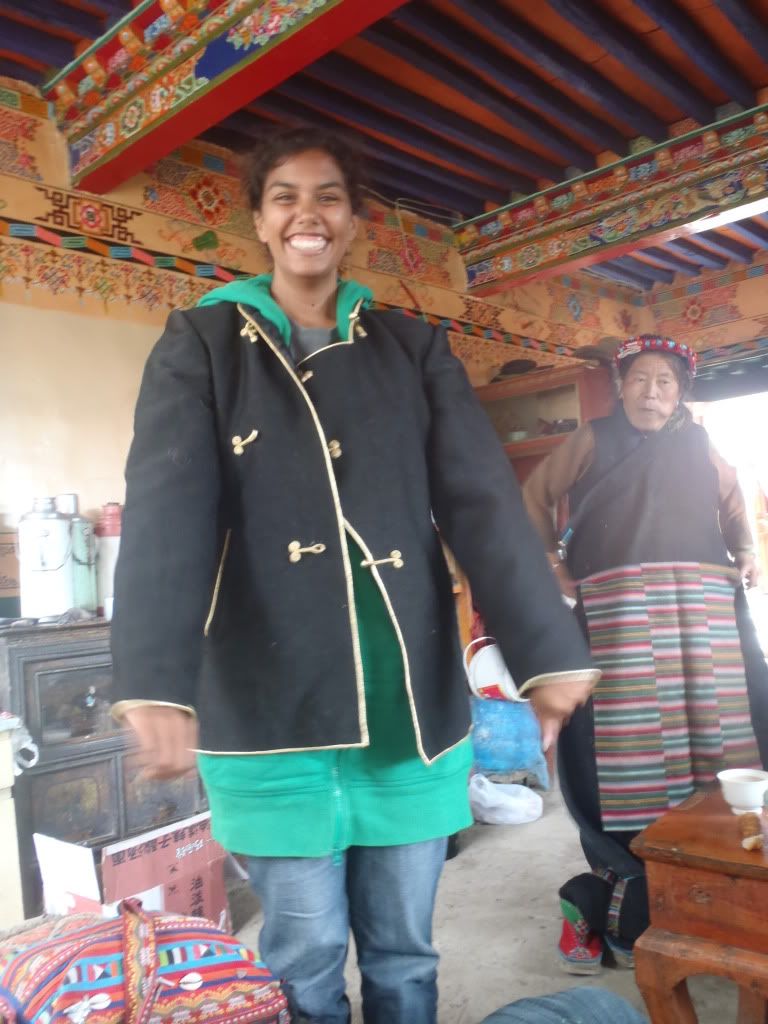
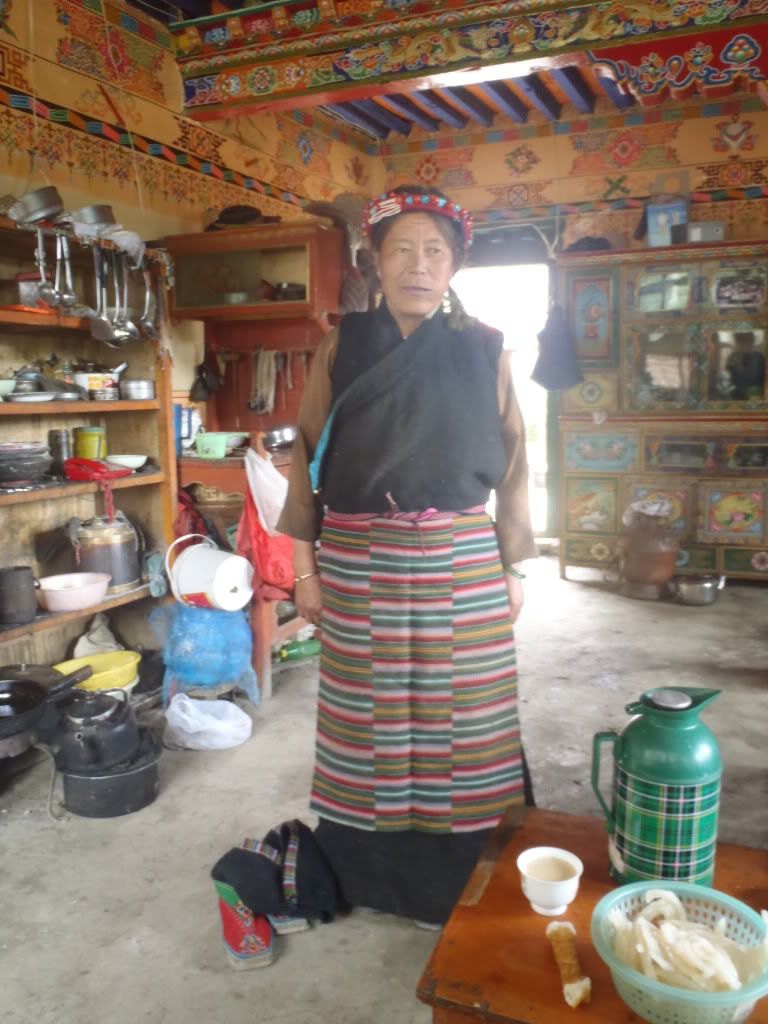
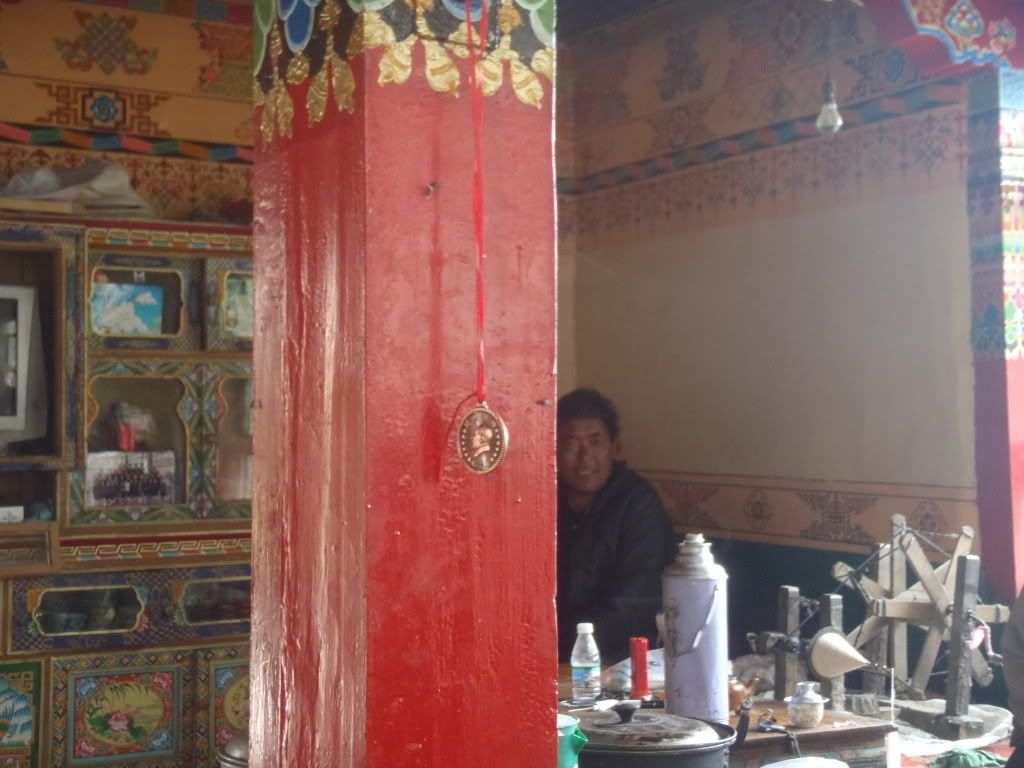
This was especially because the house they were currently living was built with the aid of a government subsidy – one they didn’t find particularly helpful since it was… a bunch of planks. Thus the family was still in debt, something most Tibetans don’t really know how to deal with since they’ve been a nomadic people for so long. While it was obvious they wanted to voice a bit more about this, the hanging Mao pedant kept them quiet instead. Things did lighten up a bit when the mother of the house brought out her ‘collection’ of beautifully tailored Tibetan clothing. I even got to try some on! Once we felt we couldn’t handle any more ‘pretend’ sips of nasty butter tea or dry candy/stale breads being constantly placed in our hands (Oh and side-note! They would stand there and watch until you eat every last sip/bite! And then immediately refill despite any protests. Yikes!) we managed to make our way out of there with a quick nod to Ray.
Our next short stop was at a barley mill/grinding house where we got to peek inside and see how the Tibetan staple is created. There were extremely environmentally-friendly (powered only by the fast-flowing river running underneath the grinders) mills where barley grains are pulverized by large stone pieces until they become small enough to fit a bunch of them into a sack for sale. The entire inside of the mill was covered in ‘barley dust’ and we couldn’t get out of there fast enough! (But the process was still really cool to see.) By the time we arrived in Shigatse that night we were all pretty tired. Dinner was at Songtsen Tibetan Restaurant where I had an average chicken tikka masala and Henk had a decent momo soup, but what was really the treat of the evening was our nice hotel room with comfy bed and hot water shower! Finally somewhere a bit more decent to stay than our previous nights’ accommodation…
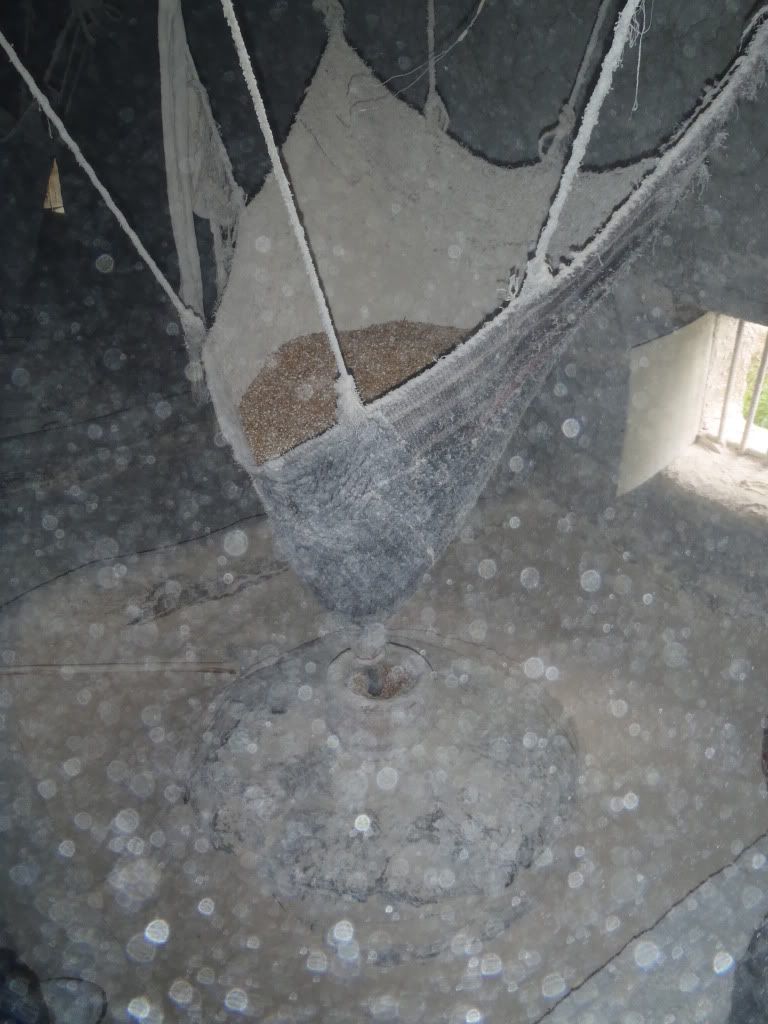
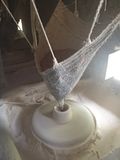
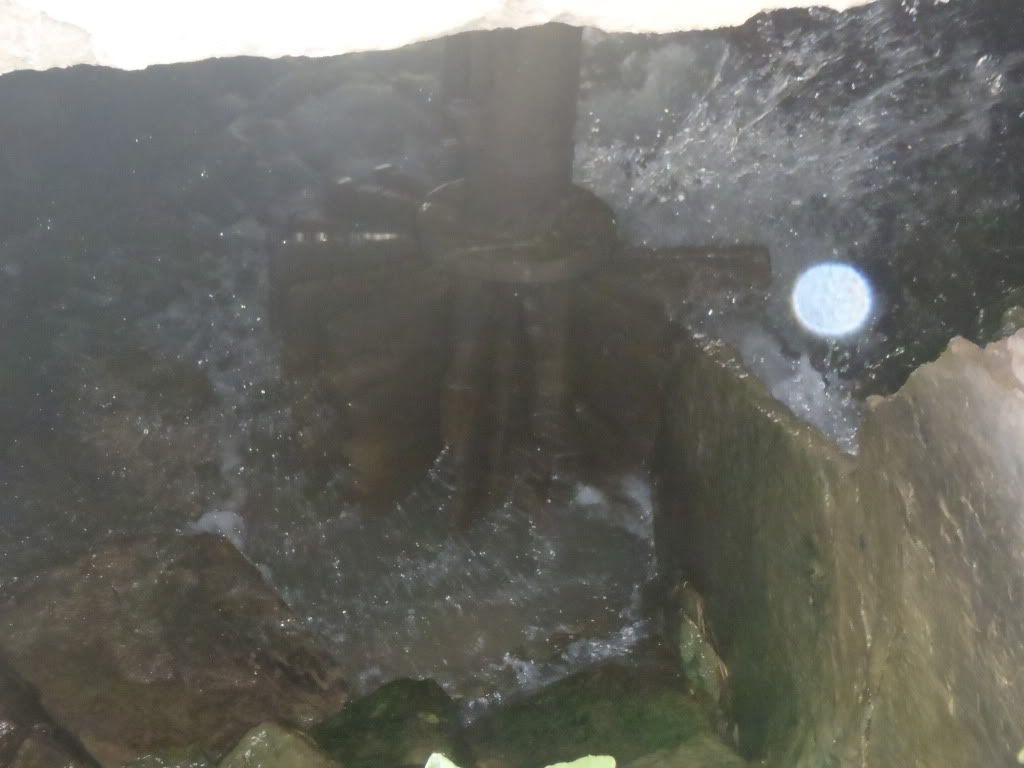
The next morning in Shigatse (which happens to be the second largest city in Tibet)we walked to our first destination (the car was having a bit of trouble) – the traditional seat of the Panchen Lamas (aka the Tashi,) Tashihunpo Monastery. While we walked through the winding, maze-like outdoor corridors Ray pointed out a large smooth wall to us, informing us that during festivals a giant thangka (much like the one at our Shoton Festival) was hung up. We explored a bunch of various halls at the Monastery, so I’ll give you a condensed run-down of everything we saw (with some help from Wiki, since again it was insanely expensive ($15+ USD per chapel, anyone?) to take any pictures):
- Jamba Chyenmu ‘The Maitreya Temple’: Tallest building of the monastery; 26 meter (86 foot) high gold (600 lbs of gold!), copper, and brass statue of the Buddha.
- Gudong & The Panchen Lama’s Palace: 4th Panchen Lama’s 11 meter (36 foot) high silver and gold (187 lbs of gold!) stupa/tomb.
- Main Chanting Hall: Throne of the Panchen Lama and two chapels honoring Buddha Sakyamuni and another honoring the goddess Tara (White and Green)
- Sutra Hall: A library containing 10,000 wooden Buddhist scripture printing blocks
- Gyeni Chanting Hall/Ngang College: Chanting chambers/chanting college with garden for monks’ debates; Animal and Buddha murals on the walls
- Courtyard, Gallery, and Rooftop: Walls covered by 1000 repeating Sakyamuni images; hundreds of tiny Buddha statues on display; ‘Chamber of Horrors Chapel’ with painted demons (first of ancient Bon faith, then adapted into Buddhist faith)
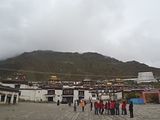




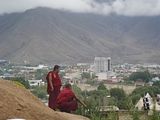
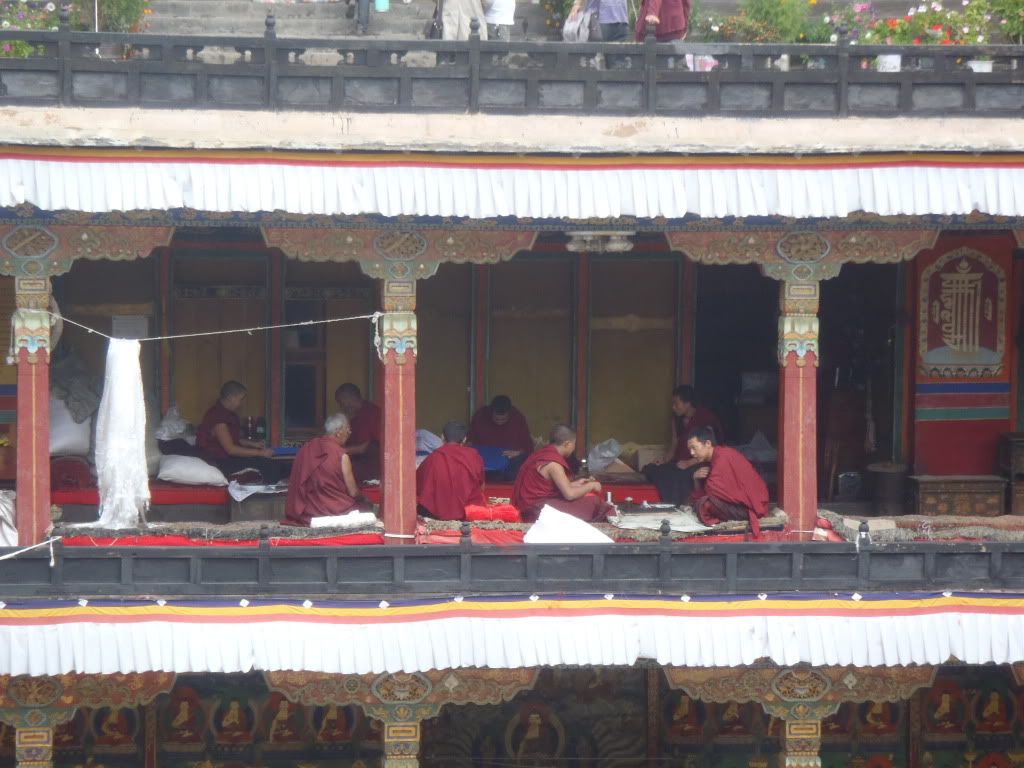
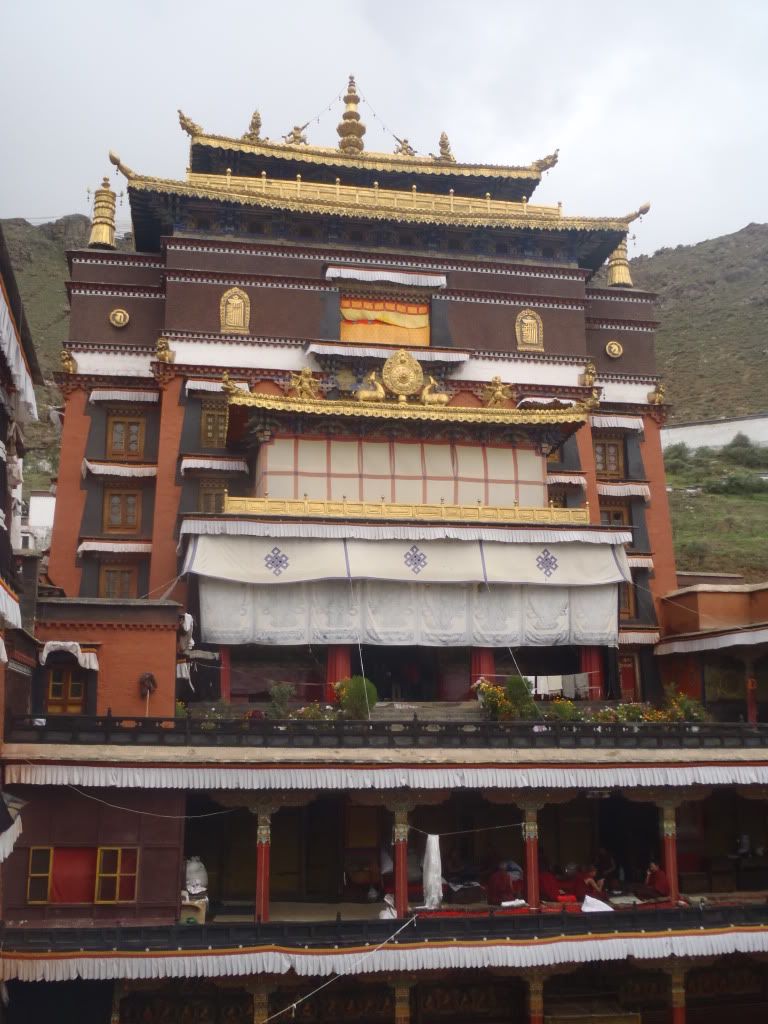

Once our exploration was over, Sam, Henk and I decided to take a walk – at the last minute stopping at a nearby restaurant to get some lunch (a gross pizza for me and equally gross club sandwich for Henk.) Ray joined us when he realized we were eating (guides eat free everywhere their group eats you know!) and we then headed for a walk through the old markets after lunch. It was here that I admired some traditional Tibetan shoes (which were actually not that comfy) and some little trinkets. Henk and I bought mini ‘demon vajra’ (lightning bolts held by wrathful deities) for our collection. The shop owner almost lost her sale to us however when she asked for $30 USD for them! We laughed in her face… wow she must have thought we were rich, stupid, or both. Mind you these things are MUCH smaller than keychain size, more like pinky-nail size, and not made out of anything special, or old, or of any special value. Wow! We ended up buying them for a much more reasonable $3.00 USD after Henk’s blunt negotiation.
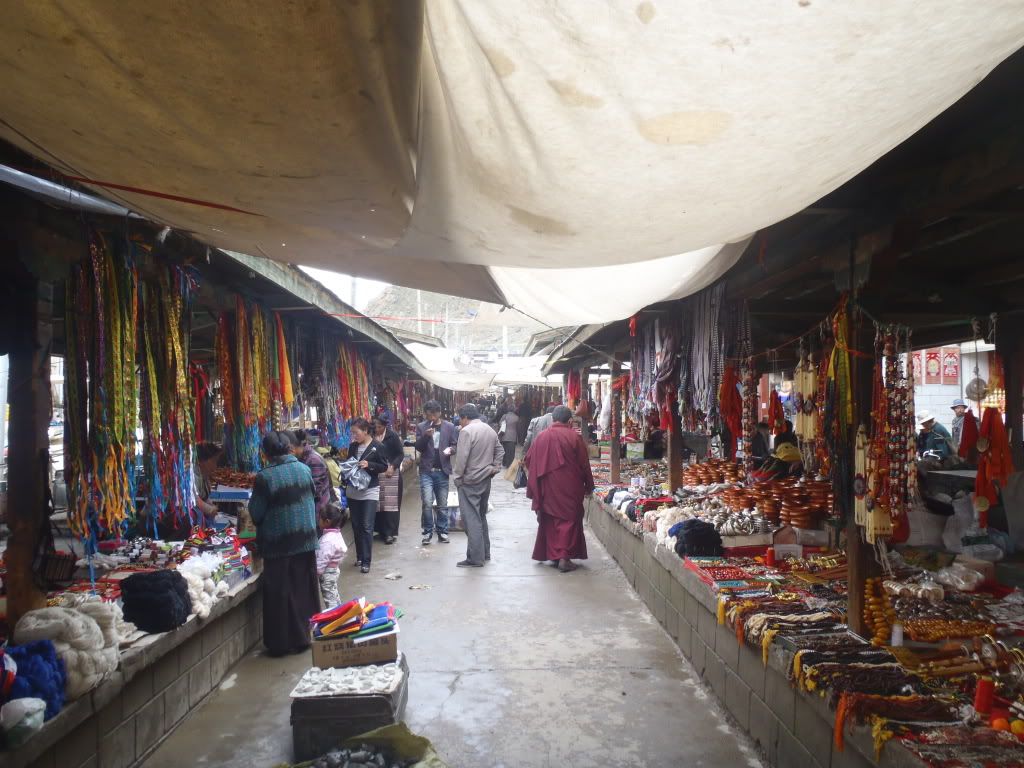
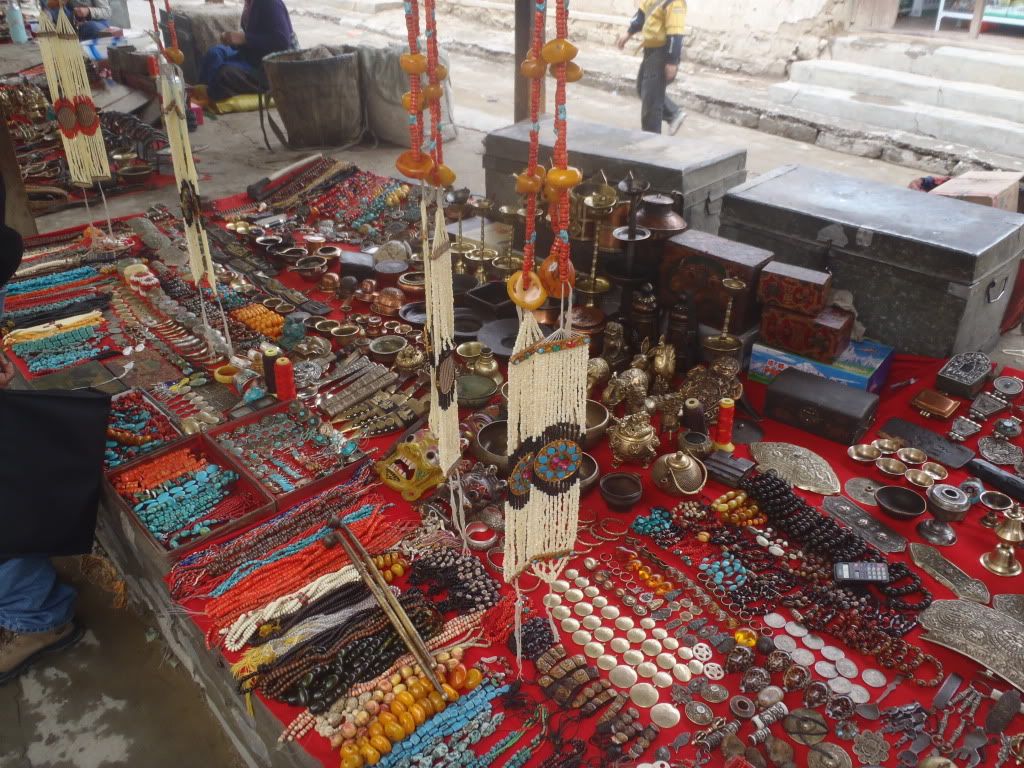
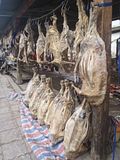
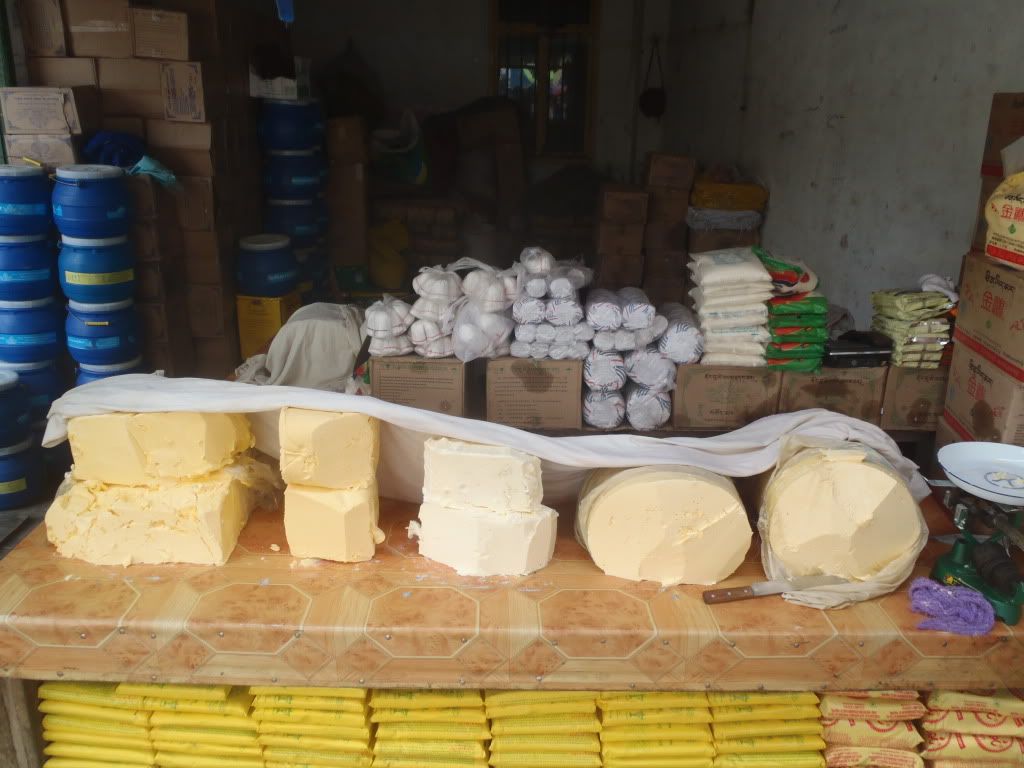
The four of us staked out an internet cafe where we spent the afternoon surfing the web and catching up on what was happening in the world. This was one of the first times we were able to get decently fast internet (or internet at all, for that matter.) That evening we feasted on chicken dishes at Third Eye which had pretty good food! I constructed a delicious chicken sandwich out of my roast chicken and order of bread… yummy! A group that Sam/Ray knew came in while we were finishing up our meal and they sat down with us to relay a bit about their travels from Everest. They told us they were so excited… the clouds had cleared for 5 full minutes and they were able to see the entire mountain! Yay! Wait… 5 minutes? Eeek. We prayed we would have better luck than that as we headed back to the hotel for sleep!

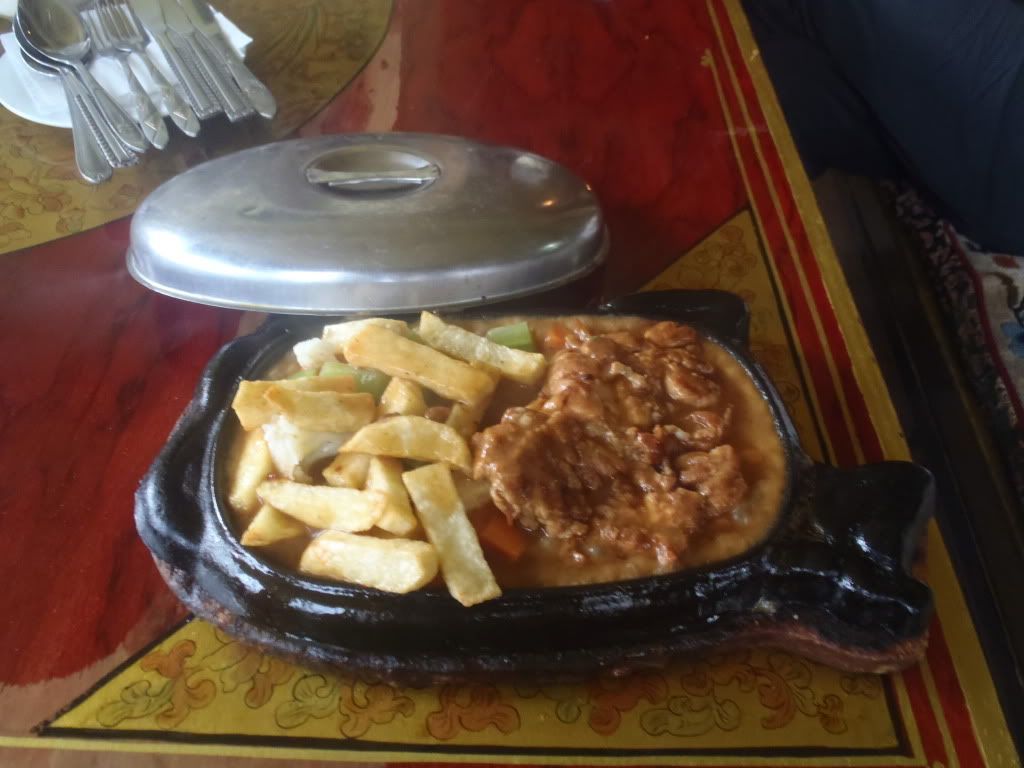
Francesca



A little more about the monastery and its head nun/incarnation from its Wiki:
“Another hall in the monastery is the dus-k'aṅ, the walls of which are frescoes illustrative of the career of the original Dorje P'ag-mo. There also have been put up inscriptions recording how the goddess miraculously defended Samding, when, in the year 1716, it was beset by a Mongol warrior, one Yung Gar…The abbess became famous when she turned herself and her nuns into sows to prevent a Mongol raid on the nunnery in 1716 (McGovern gives 1717 for this event). It was destroyed after 1959 but is in the process of being restored.”

Another interesting fact we learned was the origin of the (made most famous, unfortunately, by the Nazis) swastika symbol. Both Tibetan Buddhism and the earlier animist Tibetan religion of Bon use the symbol known as a "yung drung," as a graphical representation of eternity. For the Bon however, their image is ‘flipped’ so it points in the other direction. This is similar to their tradition of circumambulating counter-clockwise, as opposed to the Buddhist tradition of circling a sacred representation clockwise. Actually this symbol has long been used by both Eastern and Western cultures, and especially different religions. I read that the symbol can easily become popular in “basket-weaving cultures” since it is a shape formed by the traditional method of interlacing leaves/binds for baskets.

As we walked up one of the sets of stairs in the compound for an additional floor to explore, we spotted a cool mural on the side of the wall. It had yak-hair tents, nomads, animals in the fields, and the entire monastery painted for everyone to see. We continued climbing until we came out onto the roof of the building. The view was absolutely amazing! There were mountains in the background, rivers sitting before them, and everything surrounded by green (and some brown) flat fields in every direction. One of the standout rooms I remember from this place is the newer section with very recent (just 6 years ago) images of deities and their various avatars. The room had to be unlocked just for us, as we were the only people there at this monastery so early in the morning.




Ray had a special little ‘treat’ for us as we drove through more breathtaking Tibetan scenery. A glacier was coming up! From all the sources I could find, Kharola Glacier is 5560 meters high and lies on the border between Nagartse and Gyantse counties. It was so strange to have such a large glacier just –boom – sitting there around the corner! At the stop point Henk and Sam hopped out of the car to get some glacier pictures and before long we were back on the road.



On the way to the next town we passed an absolutely beautiful turquoise lake called Yamdrok, the largest in Southern Tibet. This lake is unfortunately being drained by the Chinese government for water power – which is mostly directed towards the ‘mainland.’ For the Tibetans, this lake is absolutely sacred and should not be touched since it holds serious religious significance. One of the panchen lamas protested the building of a power station on such sacred grounds… of course this holds no meaning for the Han Chinese and they continue to drain the lake, which will eventually change its majestic color. (Furthermore, for their ‘credit’ the Chinese claim they will “top up” the lake – but have 1)yet to act on this claim – and 2) “topping up” the lake won’t stop the beautiful turquoise color from disappearing as a result of the initial draining since the consistency of the lake will be altered.”) After peering at Yamdrok we all headed to the town of Gyantse, where the Pelkor Chode Monastery which also contained the famous Kumbum “Place of 100 Thousand Images” Stupa is located. In the 14th-15th centuries Gyantse was founded as a city under feudalism by religious sects/monastic schools. This town is also famous for being the location where the British scouted and invaded Tibet, taking over a local fort.


We bought our tickets for the Monastery and headed inside. The first thing we noticed was the huge stupa on the side, but we would go to that later. This Monastery was built by the Sakya sect, specifically built in the early 1400’s by Rabten Kunzang Phak – the second Prince of Gyantse. Yet again we passed the images of 4 Guardian Kings to enter into a large hall with murals and the most impressive, a 26 foot high (8 meters) copper image of the Buddha. Unfortunately one of the top floors was randomly closed (they do that quite often) so we weren’t able to view it, but there was something much more impressive waiting for us around the corner! Kumbum!


The Kumbum stupa is basically a series of multiple ‘3D mandalas’ which are meant to portray the Buddhist idea of the universe. There were 9 floors in total, each of the floors holding different ‘type’ of deities’ chapels. We circled around the groups of rooms, climbing the stairs to the next set once we were finished with the first. Man, was there a LOT of images! You almost got dizzy ducking in and out of the little rooms to look at one, and the next, and the next… Ray took us into each one and gave us a ‘one-liner’ about them, but there are far too many to show them all here. We’ll just post a couple pictures of the most interesting ones. Anyways, they all started to blend together at one point, which is when we decided to call it quits…





After Kumbum we all realized we were quite famished (and tired) so we headed for lunch at YAK Restaurant. There was a large Italian tour group already seated, so we knew our food wouldn’t come right away. I consumed 2 delicious cheese and bacon sandwiches (tastes delicious when you’ve gone weeks without real cheese!) and Henk had Yak Bourguignon which he said was “pretty good.” Sam’s chicken curry took a long time to arrive, and by the time ./;iwe all had finished we had to make a decision – go to the fort or not? No one was too excited about a steep, uphill climb for 30+ minutes but I really wanted to see something different than the typical ‘temple/monastery/etc.’ we had been taking in for the last days. My choice to go up left Henk and Sam with the decision to wait at the bottom or come up with us, and rather than stand around they chose the latter and we all ended up making the climb. And WOW no one was kidding when they said ‘steep!’ It was really a workout, but at least that meant I could justify my two sandwiches, right? Henk and Ray decided to race each other to the top, while Sam and I huffed and puffed our way after them arriving a bit later at the fort.




Once we bought our tickets we headed in to see a very impressive fort – adorned by some extremely pathetic displays. The first was the ‘Tax Hall’ where there were a bunch of peasant workers on display in front of tax collectors, showing their goods of production to them. There were also some old weapons lying around here. There was also a ‘Government Meeting Room’ of sorts, showing government officials discussing together local issues, including judging criminal offenders. There was a Buddhist monk present at these meetings, but it was just ‘for show’ and he didn’t really get involved, Ray explained. The four of us then headed outside to peer into a dungeon, and sentencing room for ‘post-judgment’ prisoners. The displays in the judgment area really gave us a good idea what happened to the guilty & unfortunate!



Here is a little background on the fort and its capture by the British from the Wiki:
“In 1904, the town and monastery were attacked by British soldiers under the leadership of Francis Younghusband (commanding 1000 troops, 10,000 servants, and 4,000 yaks) and although most of the damage was later restored, bullet holes from this attack remain in the monastery to this day... An assault was therefore made on the Gyantse fortress on 5 July and, the following day, after a spirited defense by the Tibetans which lasted until sometime after 2 pm, a heavy artillery bombardment blew a hole in the wall followed by a direct hit on the powder magazine, causing a large explosion after which some Gurkha and British troops manage to climb the rock face, scramble inside, and take the fort in spite of a heavy hail of boulders and stones thrown down upon them by the few defenders left on what remained of the walls... Following the capture of Gyantse fort, the agreement signed by the Tibetan Regent, resulted in establishment of British Trade Missions at Gyantse and Mt. Kailash in Tibet. In 1906, the British signed an agreement with the Chinese authorities, which established their influence over Tibet and thus "effectively ending both British and Russian influence".”



Unfortunately, despite all our climbing we actually were NOT at the top yet. There was another set of extremely steep and high stairs to tackle. While Henk and Sam this time decided to back out, Ray and I made our way slowly to the top for some absolutely incredible views of the city below. Furthermore, there were tons of twisting hallways to explore up there! Ray and I started wandering around before we moved to head down one of the darker halls. Suddenly, Ray started freaking out as I walked in – he claimed he had seen a mara for the first time in his life! Was this dzong haunted? I rolled my eyes, sure that he was joking with me. Hesitantly, I started again into the dark hall when I heard a sharp, loud noise that sounded like claws or screeching from somewhere in front of me. When this happened, I freaked out as well and Ray and I went running away from the hall and around to the side of the fort as fast as we could. Not wanting to temp any potential ghosts further, we made our way back down the stairs to relay to Sam and Henk our experience and possible evidence of haunting!




Finally done with the dzong, we piled back in the car and began yet again more driving! We did have a few more stops to make however… the first was just before 5:00 PM at the home of some local Tibetans. I had asked our agency to try and arrange a meeting for us with some of the locals, although we knew this could be an elaborate staging of the ‘How China is Good for Tibet’ game by local government officials. Turns out that our random nomad experience was indeed far more REAL than the local family. We walked into the local family’s colorfully painted house (which was quite large for Tibetan standards) and were immediately sat down on a couch with the hanging face of Mao Zedong directly in front of us. It was uncomfortable making conversation despite the fact that there was an English-speaking son (a college student who studies in China) in the family who was able to communicate with us. Ray later explained to us that Tibetans *never* ‘meet’ strangers and just start asking them questions about themselves, but that the people understood that Westerners did this because they were curious. Nonetheless it was obviously not comfortable for them and thus not for us.






This was especially because the house they were currently living was built with the aid of a government subsidy – one they didn’t find particularly helpful since it was… a bunch of planks. Thus the family was still in debt, something most Tibetans don’t really know how to deal with since they’ve been a nomadic people for so long. While it was obvious they wanted to voice a bit more about this, the hanging Mao pedant kept them quiet instead. Things did lighten up a bit when the mother of the house brought out her ‘collection’ of beautifully tailored Tibetan clothing. I even got to try some on! Once we felt we couldn’t handle any more ‘pretend’ sips of nasty butter tea or dry candy/stale breads being constantly placed in our hands (Oh and side-note! They would stand there and watch until you eat every last sip/bite! And then immediately refill despite any protests. Yikes!) we managed to make our way out of there with a quick nod to Ray.
Our next short stop was at a barley mill/grinding house where we got to peek inside and see how the Tibetan staple is created. There were extremely environmentally-friendly (powered only by the fast-flowing river running underneath the grinders) mills where barley grains are pulverized by large stone pieces until they become small enough to fit a bunch of them into a sack for sale. The entire inside of the mill was covered in ‘barley dust’ and we couldn’t get out of there fast enough! (But the process was still really cool to see.) By the time we arrived in Shigatse that night we were all pretty tired. Dinner was at Songtsen Tibetan Restaurant where I had an average chicken tikka masala and Henk had a decent momo soup, but what was really the treat of the evening was our nice hotel room with comfy bed and hot water shower! Finally somewhere a bit more decent to stay than our previous nights’ accommodation…



The next morning in Shigatse (which happens to be the second largest city in Tibet)we walked to our first destination (the car was having a bit of trouble) – the traditional seat of the Panchen Lamas (aka the Tashi,) Tashihunpo Monastery. While we walked through the winding, maze-like outdoor corridors Ray pointed out a large smooth wall to us, informing us that during festivals a giant thangka (much like the one at our Shoton Festival) was hung up. We explored a bunch of various halls at the Monastery, so I’ll give you a condensed run-down of everything we saw (with some help from Wiki, since again it was insanely expensive ($15+ USD per chapel, anyone?) to take any pictures):
- Jamba Chyenmu ‘The Maitreya Temple’: Tallest building of the monastery; 26 meter (86 foot) high gold (600 lbs of gold!), copper, and brass statue of the Buddha.
- Gudong & The Panchen Lama’s Palace: 4th Panchen Lama’s 11 meter (36 foot) high silver and gold (187 lbs of gold!) stupa/tomb.
- Main Chanting Hall: Throne of the Panchen Lama and two chapels honoring Buddha Sakyamuni and another honoring the goddess Tara (White and Green)
- Sutra Hall: A library containing 10,000 wooden Buddhist scripture printing blocks
- Gyeni Chanting Hall/Ngang College: Chanting chambers/chanting college with garden for monks’ debates; Animal and Buddha murals on the walls
- Courtyard, Gallery, and Rooftop: Walls covered by 1000 repeating Sakyamuni images; hundreds of tiny Buddha statues on display; ‘Chamber of Horrors Chapel’ with painted demons (first of ancient Bon faith, then adapted into Buddhist faith)









Once our exploration was over, Sam, Henk and I decided to take a walk – at the last minute stopping at a nearby restaurant to get some lunch (a gross pizza for me and equally gross club sandwich for Henk.) Ray joined us when he realized we were eating (guides eat free everywhere their group eats you know!) and we then headed for a walk through the old markets after lunch. It was here that I admired some traditional Tibetan shoes (which were actually not that comfy) and some little trinkets. Henk and I bought mini ‘demon vajra’ (lightning bolts held by wrathful deities) for our collection. The shop owner almost lost her sale to us however when she asked for $30 USD for them! We laughed in her face… wow she must have thought we were rich, stupid, or both. Mind you these things are MUCH smaller than keychain size, more like pinky-nail size, and not made out of anything special, or old, or of any special value. Wow! We ended up buying them for a much more reasonable $3.00 USD after Henk’s blunt negotiation.




The four of us staked out an internet cafe where we spent the afternoon surfing the web and catching up on what was happening in the world. This was one of the first times we were able to get decently fast internet (or internet at all, for that matter.) That evening we feasted on chicken dishes at Third Eye which had pretty good food! I constructed a delicious chicken sandwich out of my roast chicken and order of bread… yummy! A group that Sam/Ray knew came in while we were finishing up our meal and they sat down with us to relay a bit about their travels from Everest. They told us they were so excited… the clouds had cleared for 5 full minutes and they were able to see the entire mountain! Yay! Wait… 5 minutes? Eeek. We prayed we would have better luck than that as we headed back to the hotel for sleep!


Francesca

0 Comments:
Post a Comment
<< Home